EAGLE EDITION
The Episcopal School of Dallas student newspaper



The Episcopal School of Dallas student newspaper


Every student who experiences a learning or mental difference like ADHD, depression or anxiety is unique. Treatment and accommodations are adjusted by professionals and trusted adults to create the best possible environment for them. Pages 14-15


Eason leaves the nest Eddie Eason retires after 43 years of working at ESD after taking on countless positions within the community. Page 2
Friends across grades Cross-grade friendships form through sports, extracurriculars, classes and more. As seniors graduate, students ponder how they will sustain their bonds. Page 10
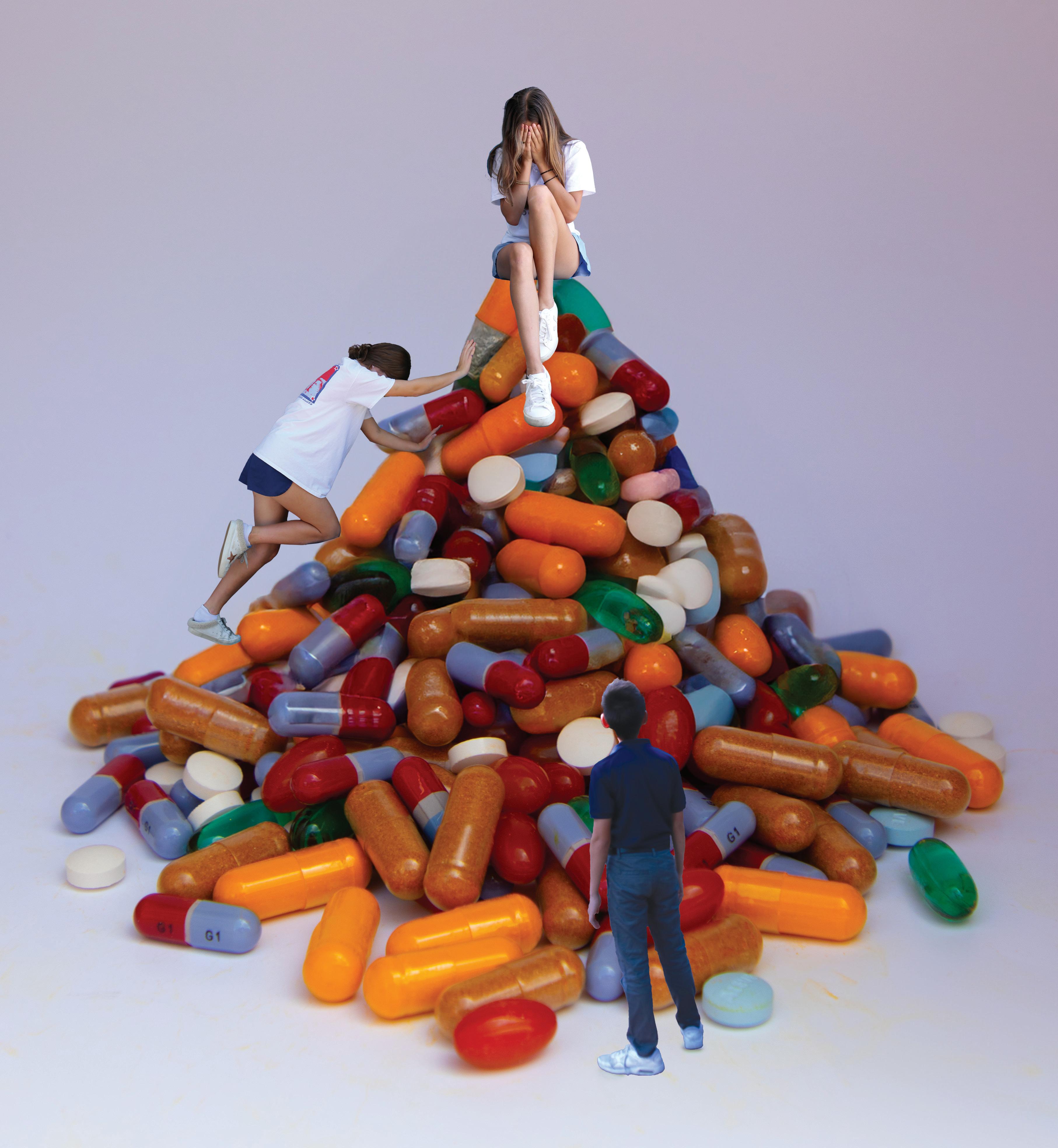
Solar Eclipse
The eagerly anticipated April 8 solar eclipse unites faculty, staff and students Page 5
In early May of 1981, Eddie Eason walked through the Hart Gymnasium into Father Swann’s office. After a promising interview with Athletic Director Mike Santerino and Head of Upper School Joan Hodges, Eason felt hopeful that ESD might be the right place for him. As a senior at SMU, Eason was looking for a job to kick start his career.
| Staff writersEason Through the Years
From left: Eddie Eason coaches Eagles baseball, his favorite sport, in '87. Eason started the baseball program at ESD in 1982 "[Baseball] is what played growing up," Eason said. Photo by Allison Smith '88 On a Wednesday in 1987, Eason stands next to a group of '88 and '89 students who are in formal uniform, an ESD tradition since the school's founding. "Formal uniforms present a nice, professional look," Eason said. Photo from 1987 Carillon yearbook Eason flips a pancake on a fall morning in 2017. Eason took students on an Outdoor Ed trip to Inks Lake, Texas. He appreciated how camping experiences like these challenged students to take on responsibilities, like cooking, themselves. "What's valuable about the camping experience is you can develop a lot of self-reliance," Eason said. Photo by Davis Felder '06 On a 2018 upper school trip to Enchanted Rock, Texas, Eason repels off a boulder. "I enjoy the geology of Enchanted Rock. [There are] so many great hikes, summits, and places to explore," Eason said.
by Davis Felder '06
Fr. Swann hired Eason on the spot. He came looking for a job out of college and ended up finding his life’s calling. Now, after 43 years on the job, Eason will hang up his many hats he wore at 4100 Merrell Rd. and is ready to retire at the end of the school year.
Once hired, Eason first worked in the P.E. department. He coached for all three seasons, as most coaches did in the ‘80s.
“I coached JV girls volleyball and cross country,” Eason said. “I’ve coached [boy’s] volleyball, [boy’s and girl’s] basketball and baseball. I’ve helped with softball. I’ve coached [girl’s] tennis.”
Alum Beall Carothers ‘87, P’25, P' 27, remembers when Eason coached his baseball team. He appreciated Eason’s sense of humor and self-effacing manner.
“Mr. Eason provided an engaging atmosphere for each individual on his various teams to meld into a more closely knit ‘team’ in the truest sense,” Carothers said. “I was not a great athlete, but many of my fondest memories of my days at ESD occurred while under the leadership of coach Eason.”
In addition to coaching, Eason has held numerous other positions. He taught math, was upper school assistant dean, upper school dean and, at one point in the ‘90s, head of upper school.
“I loved and hated [being head of upper school],” Eason said. “What I noticed about my job was that I spent more of my time dealing with adults than I did kids. That’s not the reason I got in this business in the first place.”
Eventually, Eason discovered his passion as director of the outdoor education program. He believes that the connection

between this program and the school’s founding is one of ESD’s best attributes.
“Father Swann didn’t ring a bell and send people to class,” Eason said. “He took [his students] out camping on the beach in Galveston.”
According to Eason, the outdoor education program perfectly embodies the school’s founding tenet of community.
“A lot of prep schools do school really well, and we do too,” he said. “But I thought that was always our niche in the market. We do relationships better than anyone else.”
“I came here looking for a job and I found my life's calling.
Eddie Eason Assistant Director of Outdoor Education, Employee, and Alumni Engagement
Despite countless cherished memories, his most treasured moments at ESD were the ones where he was present for his own kids’ accomplishments.
“I got to call my kids’ names at graduation and be there when they got their diplomas,” Eason said. “I got to see them play their sports and see my daughter singing in the chapel and in musicals.”
The impact that Eason leaves on this community is one of dedication and compassion. Ann and Lee Hobson Head of School David Baad recalls Eason’s welcoming spirit when Baad himself first took the position in 2018.
“Mr. Eason invited me to drive up to Wolf Run,” Baad said. “He gave me what I would call a cultural download, for which I will forever be grateful.”
Director of the Eason/Lutken
Outdoor Education Program Davis Felder ‘06 has known Eason
since he was a student at ESD himself. Felder admires Eason’s forgiving nature; when Felder was a sophomore, he made a poor decision on a camping trip and was sent to talk with Eason, who was the dean of upper school at the time.
“I was a little nervous, [and] a little concerned that I had really messed up,” Felder said. “But when I saw Mr. Eason, we talked through what happened. He was really understanding and very fair. I always remember Mr. Eason and how fair he was.”
In 2016, Eason asked Felder to work with him at ESD in the Outdoor Education program.
“It was so fortunate that he called me to work for him,” Felder said. “It's kind of funny, you know, you’re a kid and you see him at his office. And then he asks you to come work for him.”
Felder believes that Eason is the epitome of a shepherd. Fr. Swann recognized that in him the first day.
“Father Swann talked a lot about hiring shepherds,” Felder said. “Those are teachers who come here because they want to be here. They want to teach kids, and they spend all their extra time doing the things, whether it's helping a student or going to a sporting event.”
Current upper school students echo Felder’s sentiment. Junior Katelyn Hurt, who babysat Eason’s grandkids, can attest to Eason’s still impactful presence in this community.
“He is so inspiring and very wise,” Hurt said. “I connect him with ESD so much, like, he is ESD, and for a lot of people I think he is.”
Baad agrees that one of Eason’s best qualities is his dedication to Fr. Swann’s founding tenets and his devotion to making each student feel valued.
“One of the sort of enduring parts of Mr. Eason’s legacy as an educator is his dedication to Fr. Swann’s story about the shepherd,” Baad said. “You know, if you lose one of your 100 sheep, you leave the 99 and go find the one. To me, ESD does a very good job of making sure that all children are part of who we are.
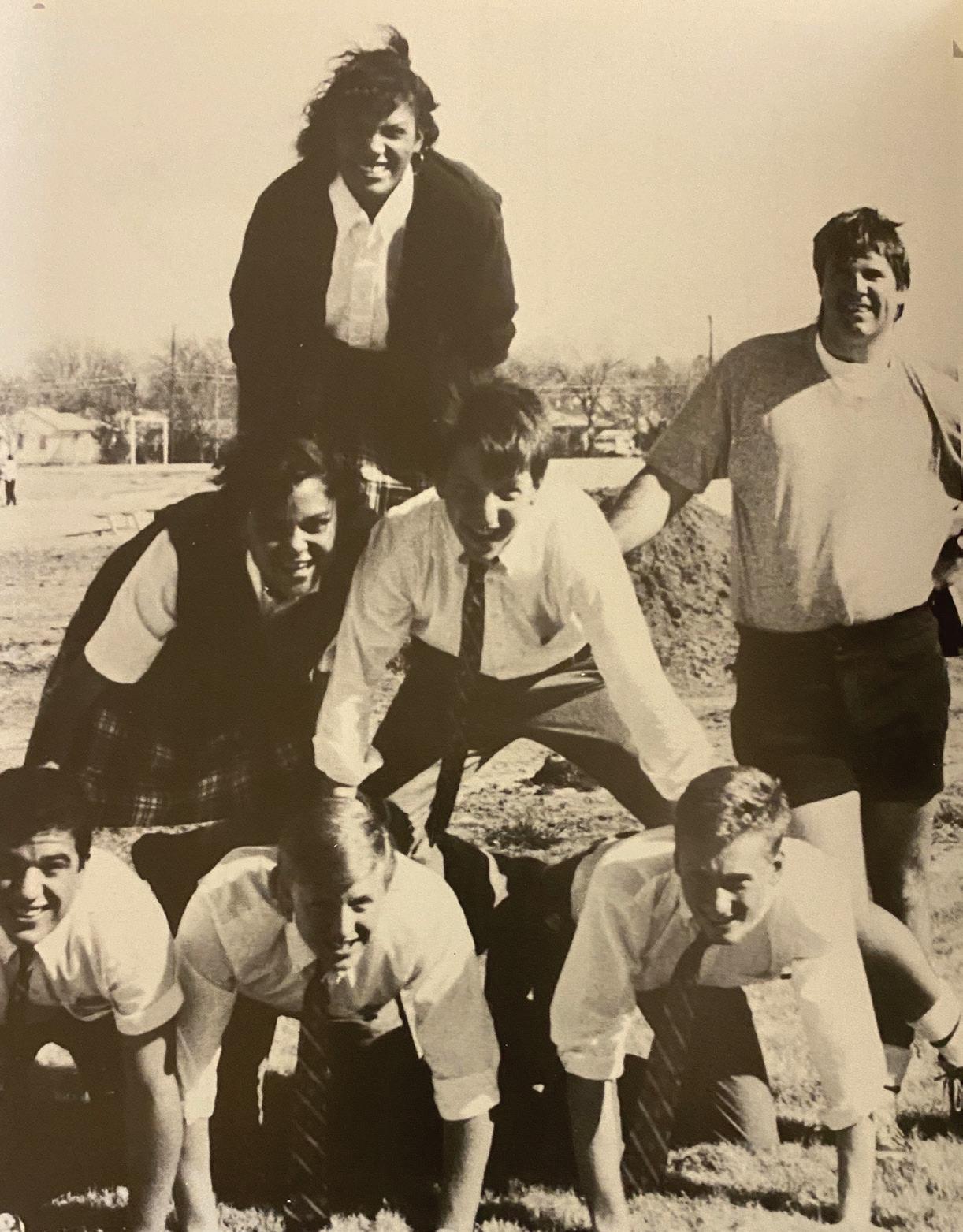
Mr. Eason embodies that in his work here.”
As Eason spends his last weeks working at ESD, Felder prepares to continue Eason’s legacy in the Outdoor Education program.
“You know, I think we're gonna have some big shoes to fill as a community, because some of the history, the knowledge that he has of the school is pretty amazing,” Felder said. “I'm looking forward to continuing to try to be a shepherd that makes other teachers want to be shepherds too.”
Eason’s selflessness is apparent in everything that he does for ESD. His priority has always been the happiness and well-being of his students.
“It was never about me,” Eason said. “This 43 year journey was not about me. It’s about the 7,400 days of school that I’ve been here, about all the students that are going through here.”
In his retirement, Eason hopes to spend more time with his grandchildren.
“I have five grandsons, I can play chase and if I want to catch them, I can still do that right now. I want them to remember a very healthy, active grandfather,” Eason said.
Even though he is retiring, Eason plans to stay connected with the ESD community.
“I’ve told Mr. Felder that if he’s ever in a bind and needs somebody to throw a backpack on, I’ll go,” Eason said.
This community will miss his presence and wishes him a fulfilling retirement.
“I'm personally grateful for his friendship and how he made a new guy feel very welcome,” Baad said. “He will forever be one of the sort of giants in the history of this place. All the joy that he's going to have in retirement, it's well deserved.”
Now, after 43 years of contributions to a variety of departments and positions, Eddie Eason is retiring. His many years at ESD will always hold a special place in his heart.
“It never felt like a job,” Eason said. “There were never any Mondays in my world.”



Beginning at Columbia University around April 17, students have stood outside campus protesting the current war in Gaza. As the protests started at Columbia, the students at many other universities in the U.S. took the same action. Students at schools such as University of Southern California, University of Virginia, University of Texas at Dallas and even schools abroad have joined the protests. The students at many of these universities faced consequences as over 2,100 people were arrested on over 40 college campuses since May 2, according to apnews.com. Along with the arrests, graduation ceremonies are being modified or even canceled in response to the protests. The University of Southern California was the first to cancel their main graduation ceremony. As the number of arrests increased and the situation escalated, other universities are following the action of USC and reconsidering official commencement ceremonies.

Camping out Protesters gather in tents at Columbia University on April 24.
As tensions between the West and Russia escalate, Russia announced on May 6 plans for military exercises involving troops near Ukraine to prepare for potential use of nuclear weapons. President Vladimir Putin ordered an exercise for these nuclear weapons that would involve aviation, missile and naval personnel in the Southern Military District. Russian officials announced a change in the situation due to the possibility of more direct Western involvement in the war. The exercises are scheduled to take place in the near future and coincide with heightened tensions surrounding Putin’s upcoming inauguration.

Moscow 's Parade In Russia's Red Square a RS-24 Yars ballistic missile system traveled through on June 24, 2020, marking the 75th anniversary of the Soviet victory over Nazi Germany in World War Two. This annual parade is set to occur on May 9 this year.
Diplomatic French-Chinese Talk
French President Emmanuel Macron hosted Chinese leader Xi Jinping on May 6 in Paris to persuade the other leader into shifting his position over Russia’s invasion of Ukraine and also discuss imbalances in global trade markets. As both countries are part of the UN Security Council, the leaders are committed to maintaining positive relations to uphold stability in Europe and around the world. Xi’s visit this year marks the 60th anniversary of diplomatic relations between the two countries.

As the choir sang the “Pass it On” song for the 10th time in a row, current seventh grader Charlie Swann quickly noticed his classmate, Daniel Fahr, as his knees began to collapse and watched as his eyes drifted shut, and slowly started to fall back. Swann caught his classmate with caution and walked him over to safety during the long-lasting 2023 pass it on ceremony.
Due to last year's unusual 85 minute Pass It On ceremony, Stemmons Family Senior Chaplain Fr. Nate Bostian and other faculty members formulated a new plan to shorten the ceremony while still retaining the most important aspects of the event.
“[After last year's ceremony] we reviewed all the videos and there were three things that had happened,” Fr. Bostian said. “The biggest thing that took up 70 percent of the extra time was the photographer in front of where everyone was lighting their candle and stopping the procession.”
Making this change, the ceremony only took 60 minutes. And although the 2023 ceremony lasted longer mostly due to photographing disorganization, other aspects were altered to further speed up the ceremony.
“We got a new senior candle this year, which is oil based and has a nice strong flame,” Bostian said. “So it will be really easy to light candles [this year].”
After students and faculty waited last year for the 85 minute ceremony to go by, the song “Pass it On” was sung countless times.
“It was weird because the candle lighting itself took way too long, so this year we're going to sing the song about three or four times and then have instrumental music for a while,” Bostian said. “Once everybody gets their candles lit, and we’re having the last people go up on the balcony, we’ll sing it one time through again.”
While the seniors and eighth graders lit their candles and made their way up the stairs, both middle school and high school choirs continued standing and singing for the duration of the ceremony.
Swann took part in helping his friend out after he had passed out from locking his legs for too long.
“[The two people who passed out] were Daniel Fahr who is in sixth grade, and Charlotte Pepper in eighth grade,” Swann said. “I noticed that Daniel had not been talking or singing and then he didn't answer. Then he fell back and I caught him. He had been locking his knees for so long while we were singing.”
While several of ESD traditions consist of services and ceremonies, newer traditions like Senior Assassin are also subject to change. Every year, the junior class president, this year being Tessa Cabrales, arranges the Assassin list consisting of all the seniors and their “targets” for the next several weeks.
“I think [running assassin] is fun and stressful,” Cabarales said. “I think that it's really time consuming, if a kill happens, I kind of just have to drop what I'm doing and update the Instagram, but I think it's really fun overall.”
Assassin has been a senior tradition for years, however many hazards have surfaced while playing the game, so measures have been implemented to prevent danger.
“This year, Mr. Augé had some safety concerns about the game being played on Merrell Road, but that’s where most of the kills happen,” Cabrales said. “So we had to kind of make up this exception where you can get killed on the sidewalk but not the actual road itself, which has been kind of hard but also makes the games more creative.”
Seniors must battle to keep their spot in the game, and it is difficult when they leave campus, because they can get “killed” wherever they go. Due to the changes regarding safety this year, further changes regarding rules and grace periods have been put in place this year.
“We got a new senior candle this year, which is oil based and has a nice strong flame.
Father Nate Bostian Stemmons Family Senior Chaplain
“The grace period started this year, so the grace period starts from 8 p.m. on a Friday to 10 a.m. on Sunday,” Cabrales said. “[During that grace period] you are completely safe and no one can get you out.”
Other senior traditions have commenced for the seniors to celebrate their last few weeks at ESD. The annual “skirt dress up” day and “bring your pet to school day” just made their way around the corner. Senior Libby Cuccia and her friends celebrated decorating their skirts while they sat at tables together, gluing on the accessories of their college colors.
“I think Senior Skirt Day is a really fun thing for all of us to do at the end of the year because everybody knows where they are going to college right now and we get to wear our shirts with our cute decorated skirts and bring the fun scooters to ride on,” Cuccia said, “It's just a fun thing overall that everyone in the senior class can participate in and it's really enjoyable for the whole grade.”
After the skirt dress up day, senior dog day followed as a hangout for the seniors, their dogs and other members of the ESD community.
“I think [senior dog day] is one of the most fun days out of the year because that morning we have our prank day and then we go home and all grab our dogs and bring them to school,” Cuccia said. “Even the lower and middle school gets to come out and see the dogs, so it's so fun bringing everyone together and it's something different then other schools which I love, and really brings our whole grade together as we tie up our last days.”
New changes are implemented for traditions like Pass it On
By Margot Cathey | Subscriptionsand
Distribution ManagerConversation
together at ESD. "I really enjoyed my experience during the Pass it On ceremony with Logan because I don't have that much time to spend with him before he goes to college." Asher said.

The Discipline Council established to enhance accountability and student support, soon disbanded
By Maggie Pickens | Staff writerThrough the newly implemented 3-6-9 community violation system, students have had greater accountability, lowering the overall number of CVs reported by faculty and staff. For this reason, the upper school administration has decided to disband the Discipline Council starting next year.
“Things are working, and they're working really well,”
Assistant Head of Upper School
Max Augé said. “We haven't sent a referral to the discipline council for months. They are not being used like they needed to be used.”
The 3-6-9 rule is described in the school’s handbook as the disciplinary consequences issued based on the type and number of discipline incidents each semester: a before school detention is issued on the 3rd CV in a semester, an after school detention is issued on the sixth CV in a semester, and a day of separation is issued on the ninth CV issued.
In the spring of 2021, Augé and upper school math teacher Lisa
Bottoms separately approached former Head of Upper School Henry Heil and former Assistant Head of Upper School Jeff Laba, wanting to better the ESD community. The consequences for community violations were not aligned or consistent. They tried to find a way to improve this while also including the students' voices.
“We independently expressed a lot of interest in helping shape that and giving our time,” Augé said. “We wanted to see ESD do better and knew it could.”
Augé and Bottoms saw no structure or order within the CV system. There was no clear expectation for the students, and with no consistency in consequences, there was no accountability for the student's obedience.
“You don't run your class out of fear,” Bottoms said. “You run your class based on procedures, so students know what is expected. Once they know what's expected of the procedures in the class… there is structure.”
The Discipline Council was
created last year and includes members from the existing Student Council, class leaders and the Diversity Council. They heard multiple cases, impacted the community, and held elections this year to create a new council and committee.
“I believe really, really strongly that students could rise to the challenge of higher expectations,” Augé said. “I didn't want to see some great kids sitting around waiting for a referral to the Discipline Council.”
Both Bottoms and Augé had faith in the community as they could see the potential; they just needed to take action to make it happen, so they were committed to making deliberate, purposeful, conscious decisions and actions to make this happen.
“We've been really intentional because it takes all of us eagles to do our part,” Augé said. “My satisfaction and success are derived from students’ satisfaction, success and growth throughout the year.”
problem this year with the new discipline system. The council is largely redundant without any disciplinary infractions.”
The new 3-6-9 system was not meant to spite students; instead, it allowed room for improvement and was intended to enable teachers to step in and help guide the students. There is no reason to keep the council in place, as their job is now handled. They have only had four cases for the year.
“The new CV system has worked wonders,” Olson said. “We have only had a few cases this year, far less than the previous years. It is not just the CV system that has made the change; we have changed the entire culture of ESD to be better students and better people and have seen a downward trend in CVs and other disciplinary infractions.”
The End of a Chapter A Discipline Council member removes their pin to mark the end of their leadership and contributions to the Council.
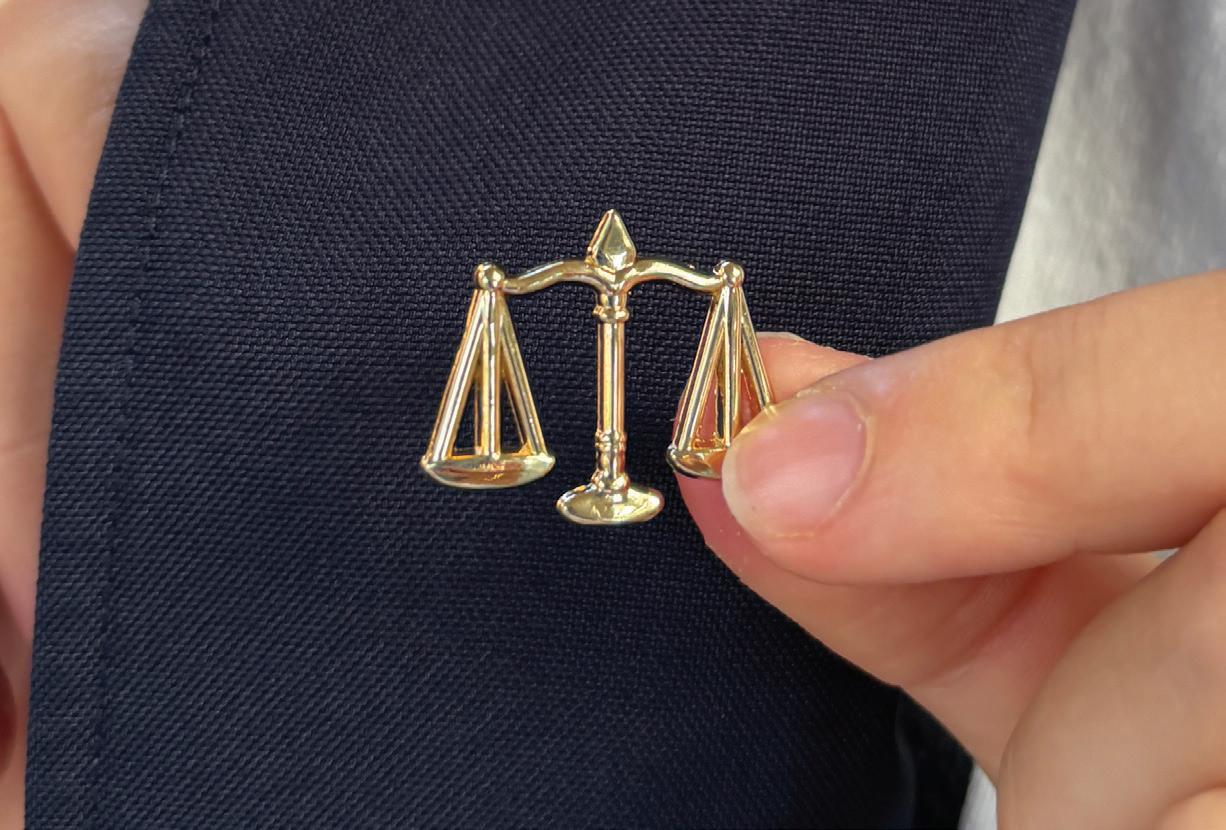



Eagles volunteer at Heart House
Spanish students and Latinos Unidos members began volunteering at Heart House this year under the direction of upper school Spanish teachers Ninotchka Beavers, Jacqueline Ornelas and Marcela Garcini. Heart House, an education non-profit organization, serves as an after school program for refugee and immigrant children in the Dallas area.
The idea was first brought to attention by sophomore Aaron Sada.
“I was looking around the internet when I first discovered Heart House,” Sada said. “I knew that Latinos Unidos wanted to give back to the Hispanic community in some way through education.”
Latinos Unidos, the school’s coalition of Latino and Hispanic students, sponsors events that celebrate Hispanic culture, but has never run a hands-on volunteering experience like Heart House before.
“Aaron knew about this organization and really wanted us to work with them,” Beavers said. “We finally got in touch with them and got it all approved to put a group together.”
The program first began on Feb. 22, and teaches the children everything from dance lessons to robotics.
“We are really fortunate to have a variety of talents and interests that we can explore here,” Beavers said. “We want to give the kids a very well-rounded experience.”
The children, ranging from kindergarten to sixth grade, are split into two groups based on age during activities. “[Heart House] is a fantastic way that we can give back to the community and help these children grow,” Sada said. “It aligns with ESD’s focus on giving back to the community through the requirement of having service hours.”
While the council was starting to work, the current Clark Family Head of Upper School, Matt Peal, implemented a new CV system that set high expectations and clear consequences for students.
“We have a system in place,” Augé said. “We have formalized the process of communicating with kids, holding students responsible when specific CV accumulations are met. We are responsive now to behavior incidents and hold kids accountable as we should.”
Member of the Discipline Council Milam Olson has also agreed that while the council was helpful, through a new system of order for the students, there is no longer a need for it.
“I think it's for the best,” Olson said. “The Discipline Council was created to address a discipline problem in the upper school when it was created, and we solved that
“We want to coach you,” Bottoms said. “We want to give you the skills and the incentive to succeed. We're trying to ensure that the students are ready for real life; in real life, they don't have one, two, three, or five chances. Life is life, and you've got to learn there are consequences.
The school wants to teach students academically but firmly believes that kids make mistakes. It is our job to help us avoid making the same mistakes again.
“It's a teachable moment,” Bottoms said. “We're trying to prepare kids academically, but it's not just about that. We're teaching them how to become good citizens. In the social aspect of the social world, it's part of the character.”
This decision was based on the school's desire to serve students individually and as a whole.
“At the end of the day, I think we're doing this because we all see that we have a hand in your development,” Bottoms said. “What we do now is create the right attitudes and goals.”
PVSA ceremony on April 29
Ninety-seven upper school students received the President’s Volunteer Service Award on April 29. The awards, which were given by Director of Community Service Learning Courtney Phelps during chapel, are awarded annually to students who exceed the minimum service hour requirements set by ESD.
Sophomore Arya Ajith received a Gold Award with 250 hours of service logged.
“I did the majority of [my hours] from the summer when I went on a Shoulder-to-Shoulder trip in Kenya,” Ajith said. “That was a little over two weeks and a complete cultural immersion that got my 100 hours.”
Eighteen gold awards were given across the four grades. The senior class received five bronze and one silver awards, the junior class received 27 bronze awards, the sophomore class received three gold, four silver and 25 bronze and the freshman class received 15 gold, five silver and 12 bronze awards.
“The President’s Council on Service and Civic Participation was established in 2003 to recognize the valuable contributions volunteers are making in our communities and encourage more people to serve,” Phelps said. “The Council created the President’s Volunteer Service Award program as a way to thank and honor Americans who, by their demonstrated commitment and example, inspire others to make service a central part of their lives.”
Summer is a popular time to complete community service trips, but many students are in programs that run during the school year too.
“I’m a teen attorney on the teen court and I go there twice a month,” Ajith said. “I get a couple of hours working there writing up cases and stuff like that.”
Trump in court Since 2023, former President Donald Trump has faced criminal charges for alleged crimes committed before, during and after his presidency. Currently, Trump is charged with 34 counts of falsifying business records trying to hide payments made to Stormy Daniels to stop her from selling her story of a previous sexual encounter with him. The trial started on April 22. If convicted, Trump faces up to four years behind bars.
On Tuesday April 30, Trump was fined $9,000 after violating a gag order by posting online comments about witnesses in the case.
With the 2024 elections growing closer, Trump and his associates claim that these charges are politically motivated by Democratic counterparts, and people are debating whether, if Trump were to win the 2024 election, he would have the ability to self-pardon these cases. As of May 8, Trump is the leading Republican presidential candidate and faces four criminal charges on 91 felony accounts. Trump has pleaded not guilty to all counts and plans to go to trial for multiple charges in the next few months. What is to happen to Trump is unknown as no situation like this has occurred in U.S. history and the Constitution does not directly address indictments regarding presidential candidates.
Photo by Beau McKnight The latest events around campus and in the U.S.— in brief Soaring with Purpose Juniors Jess Coit and Sophia Sardiña volunteer at Heart House by educating students on robotics programs. Photo by Jacqueline Ornelas United in Service Upper school students and community members gather on April 29 to celebrate PVSA recipients Photo by Hannah Hairstone The Trial of the Century Former U.S. President Donald Trump attends his trial for allegedly covering up hush money payments at Manhattan Criminal Court on May 2, Photo by Doug Mills/Pool/ Getty Images/TNSOn Friday at around 1:20 p.m., a flock of seniors walk out of the parking lot from their regular Friday offcampus lunch. But among the group of seniors, an unexpected upper schooler walks alongside them as they enter the campus’ gate: junior Tessa Cabrales, drink in hand, coming back from her first offcampus’ Friday lunch.
Armed with a track record of unprecedented good behavior, the junior class, led by their class leaders, Matthew Charlton, Jess Coit and Jake Elliston and with their class president, Tessa Cabrales requested more privileges. Some of these privileges included a Friday off-campus lunch in addition to the existing Tuesday one and changing their allowed sweatshirt colors to more practical colors of black, white and light blue. They also received the option of arriving late to first-period study halls.
Junior Class Dean Claire Mrozek made it clear at the beginning of the school year that she had preset expectations for the junior class. Even though there were no specific expectations, she hoped the junior class would raise the bar for themselves and other classes.
“We're trying to get students out of the bare minimum, whether [it is] an election position or homework,” Mrozek said. “Rather than doing the absolute minimum to satisfy basic requirements, pushing the envelope.”
Both Mrozek and Assistant Head of Upper School Max Augé noticed the high standards that the class has upheld since the beginning of the year. This resulted in them being rewarded for their good behavior.
“I recognize that this class was committed to being better and
doing better early on,” Auge said. “I would say that the juniors have done what we asked them to do, and they've done it really well.”
However, the privileges the class received for their good behavior did not happen by chance. In a meeting with Mrozek, Auge and the Clark Family Head of Upper School Matt Peal on December 15, the junior leaders and junior class president formally presented a list of requests they hoped the administration would allow them to implement.
“ [The Junior Class Leaders] came up with the most professional presentation you can think of to talk up the class and talk about their accomplishments and put themselves in a light.
Max Augé Assistant Head of Upper School
“[The Junior Class Leaders] came up with the most professional presentation you can think of to talk up the class and talk about their accomplishments and put themselves in a light,” Augé said. “[Their presentation] allowed them to ask very confidently for these privileges because they painted a very good picture.”
Cabrales has seen her junior grade grow throughout upper
school and display their ability to live up to the standards set by others, especially teachers and administration. She has always been a member of the student council, whether it was class representative or class leader, and has been able to see her class develop over time.
“I think that our grade has slowly gotten better with our behavior and I think that getting the privileges kind of pushed people to act better,” Cabrales said. “I think our grade has overall just kind of matured.”
According to Cabrales, the class president would usually write a document addressed to the head of school. However, this year she felt that was too formal and wanted to make her own presentation and involve the class leaders, as they were important to the class's achievements and good behavior.
“I didn't feel like [the document] was really one-onone,” Cabrales said. “So me and other officers decided to do a presentation and presented the big ideas.”
One of the aspects of the junior class that stuck out to the administration during the presentation was their
determination to live up to the standards set by Augé and Mrozek.
“It was really neat to the point where they were willing to lose some of their privileges if they didn't meet certain milestones,” Augé said. “Saying it's fair that if there's some backsliding or if we don't live up to our commitment to be good and do good, it's fair that you pull some of these privileges away.”
The junior class’ outstanding behavior has not only helped themselves in receiving privileges but also in relieving the pressure on teachers and administrators. Their outstanding behavior means that teachers like Mrozek do not have to worry much about leading the junior class in the right direction, as they have already proven they can do this on their own.
“It helps me enormously when students in the junior class, whether it be the class leaders, or just the rank and file, raise the bar of expectation for each other,” Mrozek said. “Honestly, it’s much more effective than anything the administration could do in terms of encouraging that behavior and leadership from the class itself.”

The class of 2025 earns unprecedented privileges due to their good behavior and negotiatingBy Emmy Moss
| Life Editor
He is addicted to chasing solar eclipses. He has traveled to the state of Georgia and to China to catch the few minutes of darkness during the peak of totality. But despite the eclipse’s totality path being predicted in his own backyard in Dallas, on April 8, middle school science teacher and eighth grade dean Scott Goetsch traveled to Arkansas with his family to catch a prime view of the solar eclipse.
“So this is my third solar eclipse that I’ve seen,” Goetsch said. “I traveled [to] different places to see all three of them. So this one I only had to go to Arkansas.”
Goetsch was determined to witness the eclipse under a clear sky. On the morning of the event, he diligently located the optimal viewing spot within driving distance and set off at 8 a.m. with his wife and two kids.
But what started as a gloomy Monday morning in Dallas became a good day for viewing the eclipse. Before Monday, the weather channels forecasted a cloudy day. However, as the day progressed, the clouds began to dissipate, and the sun made its way through the clouds. By the time of totality at 1:40 p.m., students and faculty watched the beginning of the eclipse on the school’s football field in awe.
As the totality of the eclipse began, it got cooler and darker. Many described it as a strange feeling.
“It was very weird for it to be dark while it was the middle of the day, but it was also cool to see the sun as a crescent,” sixth grader Mae Clarke said. “I saw a partial eclipse last year, but it wasn't as cool as this one. This one got a lot darker; the other one was just dim.”
While the lower school gathered on God’s Front Yard, middle and upper school students,
faculty and staff gathered on either side of the Gene and Jerry Jones Football Field, creating a community event. For a rare few minutes, everyone looked up from their phones to turn their full attention to the natural phenomenon taking place above them.
“Probably one of the best days in my new position [was] to see the community come together and to see all that planning come to fruition,” Assistant Head of Upper School Max Augé said. “And to see 800 of our kiddos… not on their cell phones, but talking to each other and interacting, engaging with each other. It was pretty neat, becoming part of the universe. It's really incredible.”
As astonishment grew and totality fell, the community headed back to their classes or offices. But as they passed by the pavilion, they were greeted by 800 SAGE chocolate cupcakes topped with house-made vanilla buttercream and a sun detail on the top.
Students and faculty grabbed a treat on their way back to their classes or offices to continue the day.
Although many found the eclipse mesmerizing, some Eagles did not understand all the excitement and the many months of planning before the event.
“The eclipse was pretty cool, but I don’t understand people traveling or going out of their way to see it," senior Hayden Parker said. “The whole eclipse only lasts four minutes, and for people to spend a lot of money and time to go see them doesn't make sense to me. Overall, it was just very underwhelming.”
The planning for the eclipse viewing event was crucial to its success and the safety of the viewers. Due to the intense UV rays from the sun, it was important to protect everyone’s delicate eyes. To do this properly, eclipse glasses were passed out to everyone on campus.
The weekend before the eclipse, ninth grade honors biology teacher
Lee Ferguson inquired about how students could recycle the glasses. While scrolling through social media, Ferguson saw that Warby Parker, the eyeglasses store, posted that they would be collecting used eclipse glasses and recycling them. The eclipse glasses that ESD used were given to Warby Parker and Astronomers Without Borders, a nonprofit organization to prevent eclipse glasses from going to landfills and redistribute them to schools, museums and other places that may not have the ability to afford eclipse glasses for future eclipses.
“I think if we have the opportunity to provide somebody else with the same opportunity to see what we got to see, then using those glasses again for that reason is good,” Ferguson said. “We were doing somebody else a service and allowing them to enjoy a really cool phenomenon in nature.”

Despite cloudy forecast, a clear sky allows for a unique

A look into ESD's process of recycling, how fines occur when recycling is mishandled and possible solutions. Page 8
Casino, raffles and dancing, juniors and seniors attend Havana nights themed prom
By Barett Coble, Ellie Detwiler, Craighton Jefferies and Betty Wheeler | Staff writersAs her eyes began to adjust to the blinding lights beaming from the grand, ivory-colored mansion, junior Caitlin Hills’ breath hitched. This was her first prom, and she was in awe.
The 2024 prom, which took place on April 6, was different from all the other school dances at ESD. Instead of being held in the school, prom was held at the Arts District Mansion, a popular site for wedding venues. With a budget of $40,000, this dance met all Hills' “High School Musical” movie expectations.
“Everything was put together really well, I was not expecting it to be so decorated,” Hills said. “I think having such a large budget, the parents were really able to do a lot with it, and really pulled it together. It was just a lot more than I was expecting,”
Instead of the typical DJ, the prom was enhanced with the tunes of a live band, encouraging many students to leave their comfort zones and let loose on the dance floor.
“We started with the dinner and then, as time went on, people started moving to the dance floor,” Hills said. “The live band was playing songs that were mostly suggested, or requested, and it was all different genres of music, and it was really fun.”
Students also experienced multiple performances from a live dance group. However, due to the performer's passionate moves, some of the students and staff found themselves a little uncomfortable in the presence of such exotic body movements.
“I think that the dancers were fantastic,” upper school Spanish teacher and senior dean Marcela Garcini said. “ They were professional, especially one guy. I think that they were trying to engage the students to dance. The students don't know about the history of Havana [Cuba], where people went and had these incredible dancers and casinos [in the ‘60]. So I think the dancers and their outfits were trying to do a replica of whatever was a casino or saloon in Havana.”
“ My favorite part was going on the dance floor and having fun, bouncing up and down. [We] had the time of our lives.”Katherine Clark Upper school student '25
Made to imitate traditional Caribbean dancing attire, many thought the dancer’s clothing was too revealing. However, Garcini did not mind the group’s colorful costumes.
“I mean, they weren’t wearing really flashy [clothes],” Garcini said, “And I think that the parents just hired crazy people to dance.”
But some students, not being familiar with this culture, were

unsure how to feel experiencing something a little different.
“I kind of expected [the experience from the dancers] because it was Havana-themed,” senior Makenna Harvey said. “Some of the way that the guy was dancing with the girl was a little bit inappropriate, but it wasn't too bad.”
Prom experiences often differ from junior to senior year. Compared to last year’s prom, senior Ben Rochon said that although there were some similarities between the two, this year’s dance was far more memorable.
“I enjoyed senior year prom a lot more,” Rochon said. “I think the venue was much more spacious senior year, and it allowed for people to breathe and not overheat.”
Considering the overcrowded, small space provided for the previous year’s dance, the airy, open mansion was a welcome surprise. For seniors, a prom highlight that sets it apart from all other school dances is the annual tradition involving seniors sharing a final dance with their parents. To many, including Ronchon, this is a particularly appreciated period of the night, due to its sentimental value.
“The seniors get there a little bit early and we dance with our parents for the first couple songs, and then the juniors come in,” Rochon said. “And so that's a fun tradition and that kind of sets the tone for a fun night.”
For Rochon and many of the attendees, his favorite part of the night was participating in the


casino. Students began the night with an equal amount of tickets that were then traded in for coins. The coins were then used to partake in any of the four games available, including Blackjack, Craps, Slots and Poker. The casino ended with a raffle, allowing students to deposit all the tickets accumulated throughout the night and potentially win prizes such as tickets to Rangers, Cowboys and Mavericks games, a pair of Miron Crosby boots and Tailwaters Fly Fishing lessons, among other things.
“The casino was a nice break from dancing,” Rochon said.“The games were extremely fun to play even though I lost most of my money.”
For some, the actual dance was not the only enjoyable part of the event. For junior Kathrine Clark, picking out a dress was more exciting than other parts of the prom experience.
“I just kind of looked online and I found the dress that I really wanted to wear,” Clark said. “I wasn't concerned if anyone else was gonna wear it or not because I liked it.”
Regardless, many students, like Clark, enjoyed the night as it brought on dancing, gambling, raffles and an aroma of fun. Prom had exceeded the expectations of students and brought on many favorable and memorable activities.
“My favorite part was going on the dance floor and having fun, bouncing up and down,” Clark said. “[We] had the time of our lives.”


ROCKY YOU MIGHT NEED TO EXPLAIN THIS TO BULLWINKLE SO SHE ACTUALLY UNDERSTANDS.
Walter Warner Chemistry teacher

“My friends and I had the idea to make the [TikTok] video for a while, and we by no means expected it to get a lot of attention or anything. Overnight though hundreds of thousands of people started seeing it."

About college acceptances TikTok that gained 2.2 million views
Ava Loftus ‘24
“I really like the Ocean Water drink from Sonic because it's so refreshing and sweet. I get it every time I go with my friends.

“I love my Tatcha Kissu lip mask because it lasts so long and always keeps my lips moisturized.”
Saanvi Maddi '26
“You are Pinocchio.
Comment about somone lying in class
Marcela Garcini Spanish teacher and senior dean

51
PERCENT OF UPPER SCHOOL STUDENTS PREFER CHICK- FIL- A TO RAISING CANE'S
40

PERCENT OF UPPER SCHOOL STUDENTS PREFER RAISING CANE'S TO CHICK-FIL-A

Despite there being many recycling bins on campus they are often misusedBy Taylor Ampofo, Lincoln Clarke, Estee Piccagli and Lilly Tomlin | Staff writers
As Emory Turner walks to her final class of the day, she discards her fifth Celsius of the week, assuming that the blue bins full of “recyclable items” are sent directly to recycling facilities. She is completely unaware of the recycling procedures at ESD.
The blue recycling bins that are designed to save our environment have not limited the waste produced on campus. There are approximately 250 recycling bins within the school’s property, and the large majority of those bins collect recycled material and trash that is funneled directly into the landfill due to the crosscontamination.
"Observing daily activities on campus, I have noticed our recycle bins are used often,” director of facilities Jay Micheal said. “However, we have had several recycling collection fines from our trash company, due to contaminated items found in the recycling.”
When recyclable items are mixed with non-recyclables in the same bin, the recyclable items are cross-contaminated.

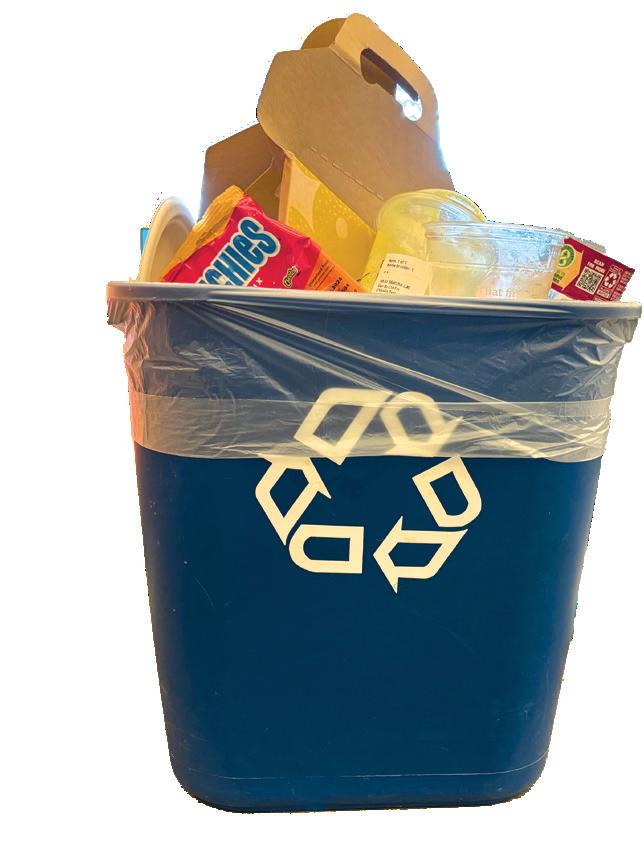
During this school year alone, ESD has been fined $2,145 for 10 cross-contamination incidents, according to Michael. The facility personnel tries their best to clean the improperly recycled items, but in most cases, facilities are forced to send these items to landfills because the community does not pay enough attention, or does know the proper procedure, when discarding waste.
“We receive a ‘Contaminated Materials’ notice on our invoice for each scheduled pick up of the recycling bins,” Michael said. “For example, in January and February, the school was fined $214.50 for each occurrence.”
According to Michael, facilities aim to reduce the contaminated recycling picked up from the bins around campus so they can reduce the amount of potential recyclable materials that ultimately end up in landfills.
“If we find a recycle bin with contaminated items, we must place that bag in the waste bin, not the recycle bin,” Michael said. “But we cannot catch them all and only after the recycling is taken offcampus by Republic Services.”
According to GreenMatters, a media company, only 35 percent of all waste is recycled in the United States, and within this percentage, only 8 percent of discarded plastics are actually sent to recycling facilities, where they are melted down and remolded. GreenMatters claims that recycling is a costly infrastructure, and facilities are difficult to maintain, revealing why there are few recycling factories currently in the United States.
“Students should be educated about the reason for recycling,” upper school science teacher John Gallo said. “And also know what to recycle.”
For example, recycling facilities cannot process recycled material that has been contaminated with some sort of waste. If recyclable materials are contaminated,

and recycling facilities recycle this material, it can be a safety hazard. This is why these recycled materials are then sent to the landfill to decompose overtime rather than being reused.
“Pizza boxes are made out of cardboard, and that grease bakes into the cardboard and cannot be recycled after that point,” upper school AP physics teacher and environmental club sponsor Matthew Varvir said. “So a lot of times people will recycle things, and essentially it ends up not being something that can be recycled for that reason.”
According to the EPA, around 25 percent of all recycled items are contaminated and cannot be recycled. Recyclable items can easily become contaminated by sugary liquids, foods and even from being placed into plastic bags.
Junior Andrew Wysk, vice president of the Environmental Awareness Club, joined the EAC after his trip to Costa Rica in 2022, the summer before his sophomore year. Wysk was so taken aback by what he saw that he wanted to make a change in his community back home.
“We did a beach clean-up on the beaches of Costa Rica, and they were absolutely filthy,” Wysk said. “Actually experiencing it firsthand told me that I needed to do something about it, especially at ESD.”
In the U.S. alone, 35.4 million metric tons of plastic are produced per year. Sixty million plastic bottles are thrown away every day, and 35 billion empty water bottles are thrown away each year, but only 12 percent of these are recycled, according to statista.com, a platform that gathers business intelligence data. According to the UN Environment Programme, although the U.S. makes up five percent of the world's population, it consumes 30 percent of the world's plastic waste per year.
“ [At] the Eagles Nest, two of the top five items bought [are] plastic water bottles,” Wysk said. “The [EAC's] primary goal is to spread information on the different types of plastics.”
The Eagle’s Nest offers an aluminum water bottle option, but Gabrielle Harrington, the Eagles Nest’s store manager, does not foresee the store ever going fully aluminum. The plastic water bottles are a cheaper option, as they are marked at $1 and the aluminum cans are marked at $2.49. Even though the aluminum cans are better for the environment, as long as there are recycling bins around campus, they plan to continue selling plastic water bottles.
“As a group that is interested and concerned about the environment, we are a bit disappointed about this,” president of the EAC, senior Melina Gounaris said. “We hope to implement a recycling program at ESD while working with the school's facilities and administration. As for the students, if these are issues that interest you and you want to make change within our own community, join the [EAC].”
Michael, too, agrees with Gounaris that the best way to improve recycling on campus is to bring the community together and spread awareness on the issue.
"I would like to emphasize the importance of community involvement in recycling efforts,” Michael said. “It's not just a facilities management responsibility; it requires active participation from everyone on campus to make a significant impact. We should ask what our goal is for recycling in 2024 and beyond; do we want to reduce our waste going into landfills and be responsible caretakers of our part of the world, or believe one person cannot make a difference. I believe we can."

Let's talk about...

My sleep schedule does get messed up during the summer because I stay up late and wake up late. About a week before school starts, I will try to go to bed earlier and wake up earlier, but it doesn't always work.”

Sometimes, my sleep schedule gets really messed up during summer, especially if I go on vacation somewhere outside of Texas.”
Getting back on track after summer break can be hard
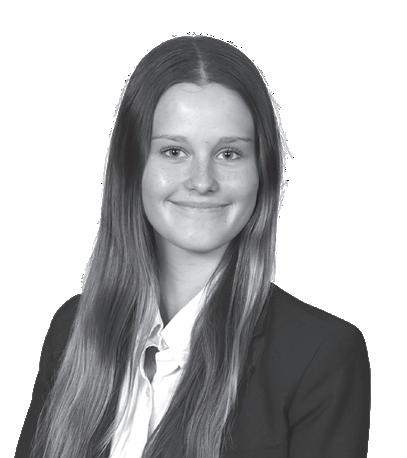
Each issue, the Eagle Edition gathers four ESD students to have a round table discussion about a relevant and timely topic. This issue, the topic is Time Management.
Staff writer Maggie Pickens talked with freshman Annabel Brown, sophmore Josh Ramirez, junior Daniella Woodhouse and senior Brayden Girata about their summer sleep schedules.

After the summer, I typically review some of my notes from last year. It takes me about two weeks to get back into a flow with school. Math and Spanish are the hardest for me, so for those subjects, it takes me about a month.
Over the break, I definitely feel like I forget a lot of material. I do meet with math tutors over the break, and that definitely helps.
It doesn't really affect me a ton because teachers are normally pretty lenient and understand that students will forget materials and try to help them get back on track.
To fix it, I make sure to prioritize sleep for at least two weeks before returning to school by trying to go to bed on time
I don't think I forget everything from last year; sometimes I need to touch up on a few topics, but YouTube is a helpful resource for that
When preparing to start again, I don't do much. The school's approach of easing back in helps, as the first week or two is noticeably easier than normal
It takes me about one or two weeks to feel like I'm officially back in the swing of things
The time it takes to get back into the swing of things doesn't differ much for each subject or how I study.”
I don't feel like I lose much knowledge over the summer; I retain it pretty well overall
I don't feel particularly more or less motivated during summer break, but getting back into the routine of studying can sometimes require a bit of effort initially which requires a little more motivation
I would definitely say that my sleep schedule during the summer fluctuates compared to the school year, but I try hard to make sure that when I get back to school, it won’t be extremely hard for me to get back on track.
I would say [returning from summer break] is definitely a little bit of a challenge, but once I get back into my routine during the school year, my sleep schedule will start to adjust to school mornings. During the last few days of summer, if I am back in town from traveling, I will try to go to bed earlier than in previous weeks. I can slowly start adjusting to waking up during school hours, so it’s not a complete shock or struggle to go from going to bed pretty late to waking up and going to bed much earlier.
I would say I do lose knowledge and material over the summer, but once we get further into the academic year, the material and concepts slowly creep back into my memory. Just practice and repetition help to drill those fundamental ideas and knowledge back into my head from being out of school for three months. During the school day I try to get work done then – during study hall or during big flex when we have a lot of free time to get work done.
To be honest, I feel as if my sleep schedule is most consistent during the summer. Outside of traveling with potential jet-lag, I can get ample sleep at night because it’s much easier to sleep in with so much less going on.
When I feel as if I don’t get enough sleep, it can take days for my body to fully recover and get back to 100 percent, even if I string together a few solid nights in a row. Setting a sleep schedule and a specific time to go to bed every night helps me get into a rhythm and makes me more likely actually to follow through with a set sleep plan.”
Making sure I have the proper school materials and that I get some good sleep before the new school year starts helps me re-energize myself and makes me more excited to learn
It probably takes me a solid week to fully recalibrate to an academic mindset after returning from such an extensive break. Even though I am reluctant to admit it, I am the type of person to look forward to some subject matter much more than others
Oftentimes, I feel as if I lose the grasp on some of the cumulative material I need going into the next school year. One of the things I like to do the week before school starts is to brush up on topics that I don’t remember as well to set myself up for success
I become the most motivated when I have a lot of things going on ...I actually feel more motivated when I start school because so much more is happening all the time
When upper school biology teacher Lee Ferguson overhear students’ talking about their disappointment about the culinary science class not being offered this year, she saw it as an opportunity.
Having always wanted to teach a culinary science course, she brought the idea of reintroducing the class to the course approval committee last fall.
“I went through the course proposal process and it got approved,” Ferguson said. “And so I’m super pumped to be getting ready to teach that class.” Ferguson has already begun planning for the class. Students will first need to get a food handlers license, and the class will focus on the four elements of good cooking: salt, fat, acid and heat.
“The way that students are going to learn about science is very hands-on. There’s going to be a lot of cooking [and] there’s going to be a lot of eating,” Ferguson said. “I would like to try and take a couple of field trips in town where food is produced so that they can learn from the people who make it and use those scientific principles every day.”
Junior Emily Singleton is excited to take culinary science next year. Her sister took the class a couple of years ago, and Singleton is happy that it is being brought back.
“My sister recommended the class to me and I thought it sounded really fun,” Singleton said. “The mixture of science and food sounds really interesting to me.”
According to Lindsey Cullins, associate chief academic officer, the committee begins collecting
proposals from teachers in November, and then works as a committee to decide what classes to add next year. Multiple factors are taken into consideration when discussing these proposals, such as teachers availability, demand for the class and strains on the department.
“We take into consideration those factors, and then we make a decision as a whole department group about which ones to actually offer,” Cullins said. “It’s up to students to decide which ones are compelling to them that they want to actually do.”
So far, multivariable calculus, linear algebra and differential equations, AP Physics C, culinary science, theater production and new engineering classes have been approved for next year.
Similarly to Ferguson, upper school engineering instructor Donald Snook went to the course proposal committee this fall. This year, he has taught advanced architecture, advanced mechanical engineering and capstone in the same class. Although all these classes meet in the same period, they all focus on different things. The architecture class focuses on producing models of houses, the mechanical class focuses on robotics and Arduino projects and the capstone class focuses on a yearlong design project. After going through the approval process, he was approved to split these topics into separate classes.
“I want to spread them out so that on their transcript, it shows what engineering courses they were taking,” Snook said. “Now that we can split them up and I have them in a period, I’ll be able to devote my full attention
to their project and help them a little bit more than I was able to this year.”
In addition, new math and science classes are also being added. Multivariable calculus and linear algebra, as well as differential equations are being offered as semester courses for those who want to go beyond AP. Many juniors are also excited that AP Physics C is being added to the curriculum. According to
Cullins, AP Physics C is great for students who want to pursue the sciences or engineering.
“I just think [AP Physics C] is an accelerated course that I feel like I would be able to do well in considering that I’ve been doing well in physics,” junior Cindy Lin, who is planning on taking AP physics C next year, said. “I enjoy it and I also enjoyed calculus last year so I think that it would be a perfect fit for me.”
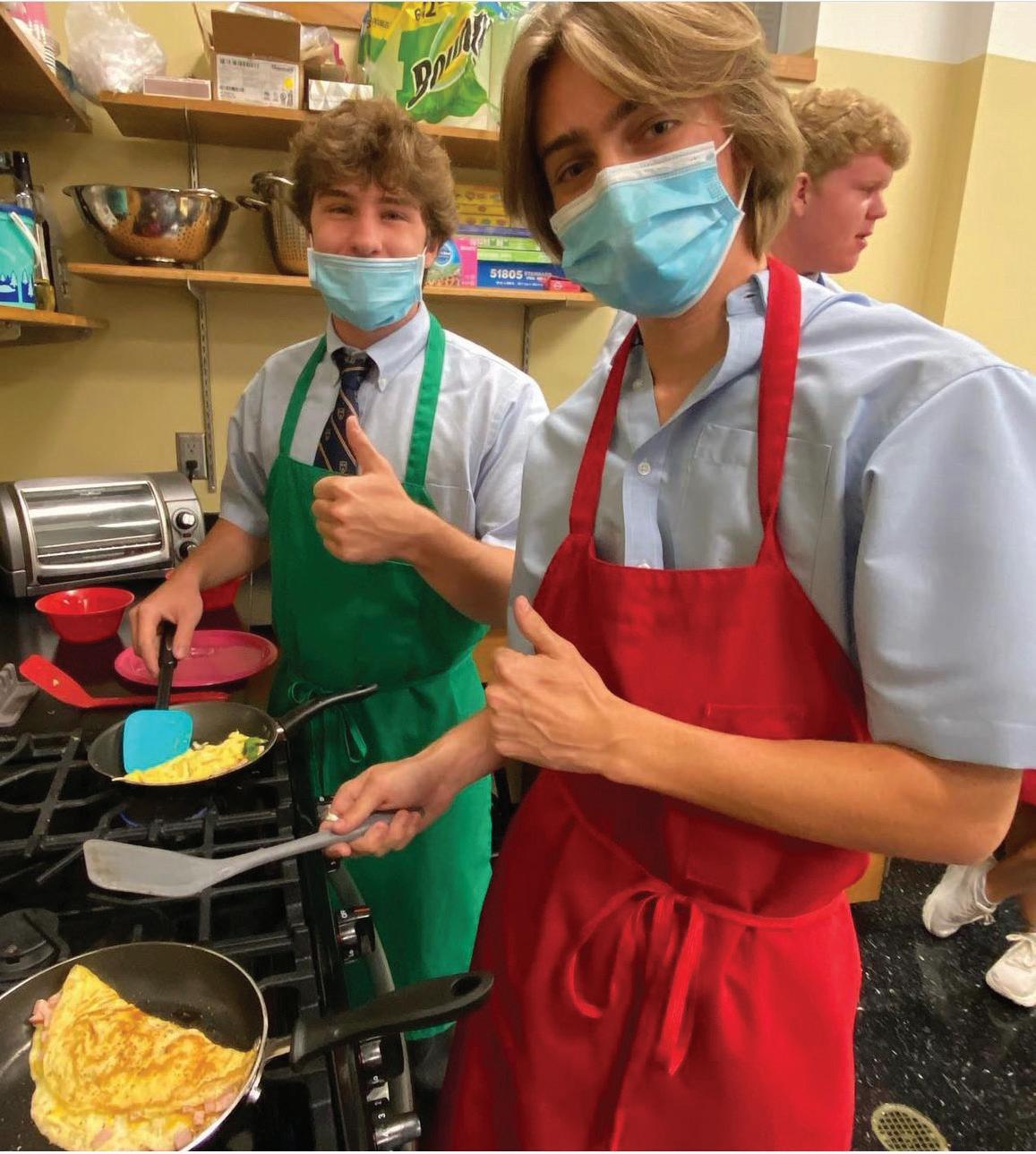
Students look forward to the addition of new classes to the curriculum
By Brooke Ebner | Web EditorCross-grade connections: friendship transcends time and distance at ESD
By Jamie Henderson | Managing EditorAwaiting her mom’s car to take her home after a long day of first grade, Betty Wheeler, now a freshman, decided to draw to pass the time because she was one of the last people to be picked up. Another girl, a fourth grader at the time, senior Makenna Harvey, was also one of the last students to be picked up and decided to help the little first grader.
“I first met her when she was in fourth grade and I was in first grade. She helped me with drawing when we were both the last people to be picked up,” Wheeler said.“I remember it to this day because I always looked up to her. We never really talked until soccer season this year but then we immediately clicked and we spent so much time together over the season. After soccer, we became even closer.”
At ESD, many opportunities are offered to build across-grade friendships. While Harvey and Wheeler met in lower school, their friendship took flight this year. Now, as Harvey is about to graduate and planning to attend the University of Mississippi, their friendship faces new challenges. Regardless, Wheeler and Harvey are determined to make it work.
“I am so excited to have Betty come visit me at Ole Miss,” Harvey said. “I will definitely be coming back to watch her rock in all her sports and everything she does.”
Other students connect for the first time in the upper school.
Senior Margaret Shirey and sophomore Giovanni Sabella met and became friends during Latin class in 2022. Their friendship continued to grow while they competed on the track team and performed in the winter musical
together.
“[Margaret] is always there for and she’s really nice,” Sabella said. “We have gotten really close these past two years.”
But just like Harvey and Wheeler, this duo will also part ways when Shirey graduates in a couple of weeks. And while they will be able to stay in touch remotely and through social media, their friendship will lack face-to-face interaction.
“Sebastian is a fantastic friend because he's not afraid to tell me the truth and pushes me to be better athletically and personally.
Tucker Robertson Senior“We don’t hang out outside of school, so we will definitely text and call more often since we won’t see each other,” Shirey said. “It’s sad to leave my close school friends, but I’m confident we will stay in touch.”
Yet, classes and lower school interactions are not the only way grades intermingle. Sports are another platform that foster underclassmen and upperclassmen relationships.
Junior Sophie Stager and senior Libby Cuccia met when lined up near each other during a field hockey drill earlier this year in the fall. Their favorite thing
about their friendship is that they are in different grades, and therefore different friend groups, which makes being friends easier.
“There’s never any drama or buildup because we aren’t in the same friend group,” Stager said. “We can tell each other anything and have a lot of trust.”
But Cuccia’s and Stager’s friendship also does not escape the impending date of graduation. Although Cuccia is staying a car ride away and will attend the University of Alabama, maintaining a friendship still remains a challenge.
“It will definitely be harder. It was already hard when field hockey ended,” Cuccia said. “We will just text and FaceTime a lot more and she will visit me when I come home.”
Similarly, senior Tucker Robertson and junior Sebastian Guzik met while playing soccer in middle school but became closer during Guzik’s freshman year when they participated in the same track events.
“Sebastian is a fantastic friend because he's not afraid to tell me the truth and pushes me to be better athletically and personally,” Robertson said.
“He never was the type of guy to switch up on me and whatever he had to say, positive or negative, he always let me know while keeping it in a friendly manner and I try to do the same with him.”
With the end of SPC, Guzik and Robertson’s time together has begun to dwindle. Robertson will attend Tuskegee University in Alabama in the fall, and Guzik will be left behind to finish his senior year track season alone.
“I think our friendship works so well because we both have similar interests and personalities, and we have
STICKING TOGETHER THROUGH GRADES AND GRADUATION
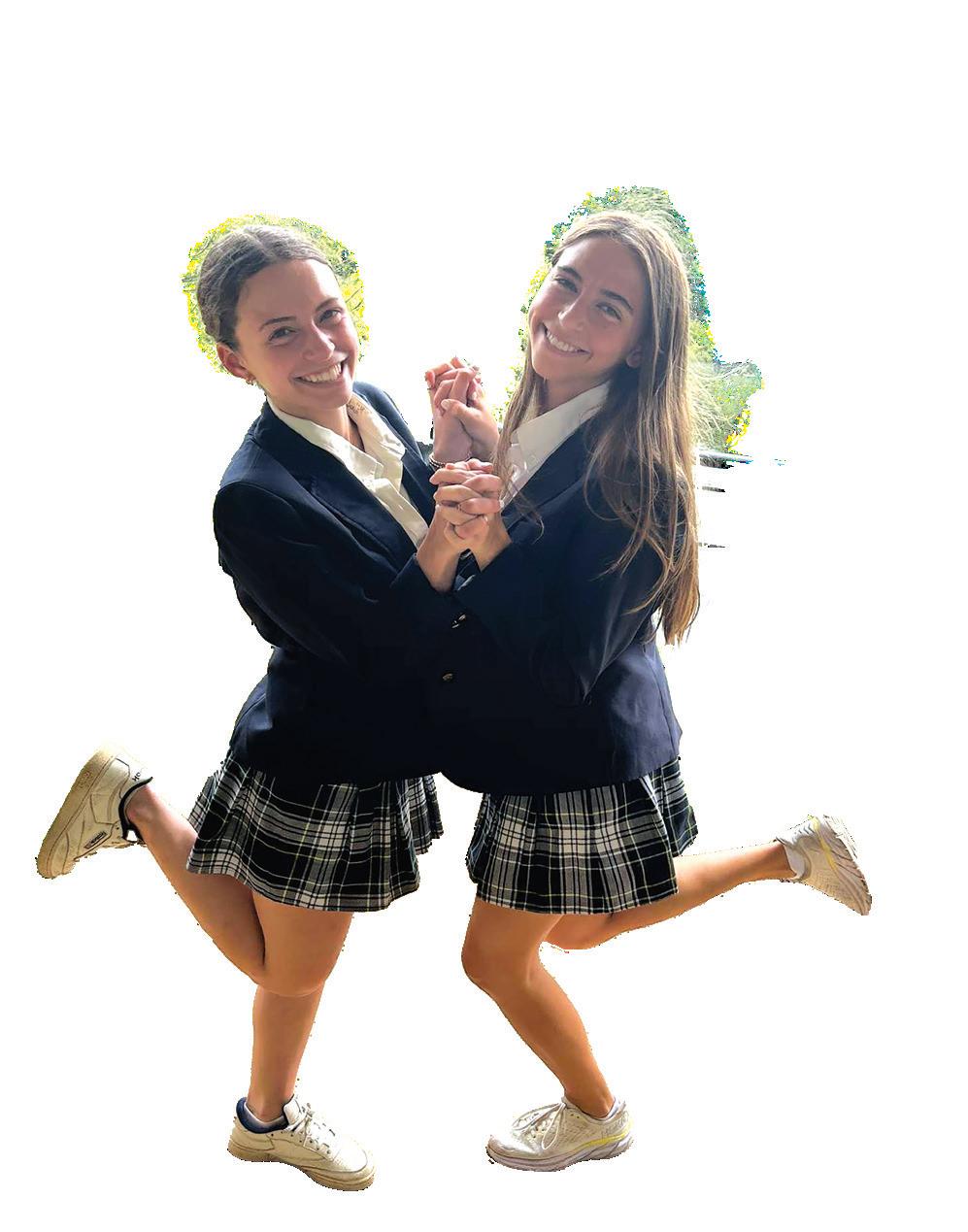

by Jamie Henderson

Friends in any language
Although the distance and grade gap provide an issue for Sophomore Gio Sabella and senior Margaret Shirey, both are determined to stay in touch through text and Snapchat . "I can always count on him coming up to me with a smile and making me laugh," Shirey said. Photo by Milam Olson
bonded over the three years we have been good friends,” Guzik said. “Graduating will affect our friendship since I will no longer get to see and talk to him every day, but I know that I will see him when he comes back and visits and that I can always send him a text.”
Like Robertson and Guzik’s friendship, junior Hutch Chipman and senior Logan Lear are also good friends who met through their love of sports. They played both football and basketball together.
“Hutch and I became friends during junior varsity football when he was a freshman and I was a sophomore,” Lear said. “I was their fearless leader and so was he, so we became great friends right off the bat.”
Though they met in football two years ago, their friendship has grown since because of their time playing basketball together.
“My favorite thing about being friends with Logan is him teaching me how to become a better person on and off the field,” Chipman said. “I wouldn’t be the person I am today without Logan’s leadership from football and basketball. I have learned a lot from him these past years and will remember it all once he leaves me.”
Lear is leaving Chipman behind as he will start his new journey at the University of North Carolina. While both are excited, parting with each other after years of sports will be a hard transition.
“Since Logan is going away to UNC, I won’t get to see him as much, but I am looking forward to hanging out with him whenever he is back in town,” Chipman said. “I think our friendship will remain strong and I’m going to miss my baby.”

Bros in blue

Although junior Hutch Chipman is sad to see his friend go, he is excited to see what senior Logan Lear will do in college and beyond. "Our friendship works because we have the same interests and we are basically the same person," Chipman said. Photo by McKenna Duncan
Running to friendship
With this year's track season coming to an end, junior Sebastian Guzik has to find other ways to maintain contact with senior Tucker Robertson even with 685 miles between them. "My favorite thing about being friends with Tucker is his big personality since he is always saying or doing something that makes everyone laugh," Guzik said. Photo by Logan Hope
On April 19, Taylor Swift released her new album, “The Tortured Poets Department,” giving Swift her 14th No. 1 album on the Billboard 200 album chart, according to the Washington Post. This album has sold almost 2 million copies, passing Beyonce’s “Cowboy Carter” for top-selling album so far in 2024. Her album has also reached the highest number of streams on Spotify in one day, with 300 million streams, becoming Spotify's most-streamed album in one week. The album has also reached the most vinyl sales of any album in the modern era, with a total of 859,000 vinyls sold, surpassing her previous album 1989 Taylors Version.
Weekend one of Coachella occurred on April 12 to 14 at the Empire Polo Club in Indio, California and was filled with collaborations, special appearances and extravagant performances. Some of the top performances included Lana Del Ray, who entered on a motorcycle as the headliner on Friday evening, Tyla and Sabrina Carpenter. Another highlight of the weekend was Gwen Stefani’s reuniting with her old band, “No Doubt,” which included a surprise performance with Olivia Rodrigo. Also during the weekend, Rihanna made an unexpected appearance, and although she did not sing, she left people in shock.
On May 6, celebrities such as Gala co-chairs Zendaya Coleman, Bad Bunny, Jennifer Lopez, Chris Hemsworth and Anna Wintour debut some of the most iconic looks at the Met Gala. Among these celebrities, Zendaya made the best dressed list with her John Galliano custom-made Margiela gown, and surprised everyone with her outfit change into a Givenchy Spring 1996 couture gown to close up the show, according to Bazaar. With invitations already hard to get, tickets were even expensive for celebrities without a sponsor, usually $50,000, according to the fashion website, Glamour. This gala raised money for the Met’s Costume Institute through donations and entree fees. This year's theme, The Garden of Time, was inspired by the Costume Institute’s current Met exhibit, “Sleeping Beauties: Reawaken Fashion.”
Nicole Kidman was presented with the 49th Lifetime Achievement Award from the American Film Institute on April 27 in the Dolby Ballroom in Los Angeles, California. The venue was filled with portraits placed strategically to show the 56-year-old actress’ successes. Along with being one of the younger recipients of this award, Kidman is also the first Australian, according to the website Deadline. This award was given as an indication of her dedication and contributions to the film industry. During the ceremony, Kidman was celebrated by many past recipients and actors including Naomi Watts, Reese Witherspoon and Morgan Freeman.
Following artist Kendrick Lamar’s diss track “Euphoria” about Drake, released on April 30, Drake released his song in response to Lamar, “Family Matters,” on May 3, according to the website Pitchfork. Only 30 minutes after Drake’s release, Lamar released another diss track,“Meet the Grahams,” and “Not Like Us” on May 4. According to Andscape, this battle started in March when Drake released his songs “Push Ups” and “Taylor Made,” but did not pick up speed until recently when the artists started to release more songs aimed at each other.
It was the first day of her freshman summer when sophomore Lyla Zicarelli stepped outside in her brand new workout set into the blazing summer heat, eager to try her very first workout class. Zicarelli, with no yoga experience didn't know what to expect, but was ready to leap out of her comfort zone into the unknown.
Since last summer, Zicarelli has continued her workout journey and plans to explore even more classes. During the school year, Zicarelli is a lacrosse player and often has a hard time finding challenging and engaging ways to stay active during the summer, and she is not alone. Twenty-six percent of ESD students struggle with finding workouts to do in their free time and during the off-season, according to a May 6 poll of 125 upper school students .
“Me and my friends were talking about how we wanted to have a productive summer and still stay fit,” Zicarelli said. “I play sports during the year but during the summer it gets harder to keep up with that, so we decided we wanted to do some yoga classes.”
According to ESD Athletic Trainer Lesly-Loudmar Mathurin, it is essential that student athletes stay in shape and maintain their strength to avoid any inseason injuries. In agreement with Mathurin, the Center for Orthopaedic Surgery and Sports Medicine concluded that some of the biggest athletic career-ending injuries like ACL and MCL tears, along with most other injuries can be prevented by strength training and exercise in general.
“A good reason for athletes to stay in shape is due to the fact they don't lose any type of strength, endurance or power,” Mathurin said. “[It] helps them stay active in regards to their personal health in general. But, you don't want to lose anything that you gained throughout the time you participate in your sport.”
ESD athletes participate in strength training in season and during the off season of their sports to enhance performance and prevent injury. Each lift is tailored to meet the needs of the sport, targeting certain muscles and movements made when playing the sport. Strength training is important, but training other parts of the body with yoga or Pilates is beneficial as well.
“I think doing activities in the offseason that are not attributed to your sport are great pros for being a better athlete overall,” Mathurin said. “I think Pilates or yoga are activities that will help enhance your strength in ways other than just doing your basic strength training. So, I'm a big advocate of activities such as that.”
Pilates classes and yoga classes have skyrocketed in popularity in high schoolers. According to a 2022 poll by the National Institutes of Health, almost 57 percent of high schoolers participate in exercise classes each week. For ESD students, that number is at 46 percent.
After trying multiple different classes, sophomore Drew Dundon found SculptHouse at Inwood Village; this workout class meets her needs and helps her achieve her
fitness goals. SculptHouse workouts include half a session of Lagree Pilates which focuses on slow movements to engage muscles, and the second half on a curved treadmill which allows for a lowimpact cardio session that is easier on the knees, hips and back.
“I like going to class [at Sculpthouse] because they have really good music and since it's a scheduled time I am more motivated to go to the class and make sure to get out,” Dundon said. “If you book all the classes at the beginning of the month or beginning of the week, then you have a certain number that you have to go to and it gets you really motivated to go.”
Dundon has attended 66 classes over the past year, partially credited to the low costs of classes. Costs for these classes and gym memberships can sometimes be steep, but SculptHouse offers a 50 percent student discount to students living in the Dallas area. Dundon pays only $30 for each class.
Although some people enjoy these classes for their high intensity, sometimes they feel designed for experts. Sophomore Cate Stephenson believes workout classes create social pressure to perform for people new to the class. Classes can have complicated machinery like bikes and reformers that can be difficult to operate.
“Personally, I don't enjoy workout classes because I feel like people are watching me,” Stephenson said. “I also can't figure out how to work the shoes at SoulCycle or work Pilates machines.”
These classes can spice any exercise routine, but some think it can be difficult to fit into a busy schedule. Junior Katherine Clark trains at Oakfit, a gym dedicated to designing personal training for young, growing athletes. Clark said that individual training is easier and more flexible with her busy schedule, as well as a great way to target her goals and the specific things she needs to work on.
“Workout classes don't target your weaknesses and help you get better, it is just an average workout that is made to make money,”
Clark said. “I go to Oakfit during the summers and I like it because it makes you better as a person and finds your weaknesses and tries to improve them.”
In the ESD community, yoga, pilates and other group workout classes are mainly taken by girls, but senior Hunt Sands provides insight on why he and other high school boys prefer alternative ways to workout.
"Personally, I think that boys don't like to go to classes because our goals are usually to gain weight and get bigger,” Sands said. “Yoga doesn’t always help achieve those goals and the majority of people in the classes are moms.”
Working out can be dreadful and hard to commit to, but for Zicarelli, taking workout classes has brought her excitement to exercise and joy in doing so.
“What used to be such a chore is now one of my favorite things to do,” Zicarelli said. “I can’t wait to try new classes in the upcoming summer with my friends.”

Featured Artists
Orchestra members show off their instruments and the special backstory behind playing them. Page 13
Freshman Ariana Castilleja swerves past hundreds of jostling bodies and flailing hands, trying her best to avoid a minor injury yet again in the overflowing mosh pit at the Independent Schools Association of the Southwest Fine Arts Festival.
Castilleja described her first year at ISAS, which took place from April 11 to April 14 at St. Andrew’s Episcopal School in Austin, as a truly thrilling experience. After practicing with her friends in the school choir, they went to the illuminated moshpit blaring loud music.
“[Opening night] was like a big party, all the kids from the states coming together to have a great time,” Castilleja said. “The bands performed at the mosh pit and played all different kinds of genres.”
During ISAS, students from Texas, Oklahoma, Arizona, New Mexico, Louisiana and Kansas showcase their work and receive critiques on visual and performing arts projects produced throughout the school year. This celebration of art and community has been in swing since 1967. ESD participated in the event for the first time in 1983, becoming one of many students’ core memories.
From freshman to alumni, attending ISAS has always been filled with anticipation. Some even compare the festival to worldrenowned musical events.
“I either call [ISAS] a mini Woodstock or a mini Fringe Festival,” performing arts department chair Lauren Redmond, who attended ISAS for the first time as an eighth grader in 1997, said. “It is a place where everyone and anyone from the ISAS schools can show their wares. [They're] showing their art pieces, they're showing their performances, they're showing portfolios, and they're getting adjudicated across the board. For us, ISAS is three days of nonstop art implosions and explosions.”
After hearing about upperclassmen’s experiences at the festival through previous years, underclassmen’s
expectations grew.
“We were told about [ISAS] at the beginning of the year,” freshman Marloh Madison, a member of the upper school choir, said. “All the sophomores, juniors and seniors said it was really fun since they all went to it in the past. I've heard it's a really fun experience, and all the workshops set up are interesting.”
Junior Tessa Cabrales participated for the third time at the festival this year, but her freshman year stands out as one of her favorites.
“I either call [ISAS] a mini Woodstock or a mini Fringe Festival. It is a place where everyone and anyone can show their wares... For us, ISAS is three days of nonstop art implosions and explosions.
Lauren Redmond Performing arts department chair“My favorite memory [was] when we were at two separate schools for ISAS,” Cabrales said. “Half of our cast was at the wrong school when we were about to go on, and they had to find a shuttle and race to the other school to get there in time.”
After returning from this year’s festival, Cabrales said that she built relationships with many people that she does not typically see during the school day, enhancing her experience.
“I knew what I was doing this time around,” Cabrales said. “So it was fun to just go and see other schools perform …My favorite part was how we have the freedom to go see whatever we want throughout the day.”
For those who returned to ISAS, this year did not disappoint. Redmond believed that this year’s festival, being further from Dallas, merely enhanced the experience.
“This is the first time that we've done the full festival far enough away from us because last year was in Fort Worth,” Redmond said. “We still stayed overnight, but there's something about being 45 minutes from home versus being three-plus hours from home that makes it a little more fun.”
The students enjoyed viewing other schools' artwork and performances, all of which were the products of months of preparation to create a diverse selection of visual and performing arts presentations.
“My favorite part was getting to watch other schools at the coffee house, which is this place where anyone can sing any song they want, and a lot of bands play there,” Cabrales said. “It’s cool to see kids who are in choir, for example, singing something more fun and popular.”
Like any large event, no matter how much planning went in, there were some minor technical hiccups along the way. The St. Andrew’s screen for the films did not arrive at the festival on time. ESD, being one of the first schools to present, panicked. Anxiety amongst faculty and students arose as the show-time began to creep up.
“So we were playing this game, will it happen? When will it happen?” Redmond said “Kind of [a] scary game but I mean, we were still able to go on the first day, just an hour late.”
Despite the few mishaps, the festival remains a treasured memory for many students for years to come. Every year, students, faculty and alumni bond over the shared ISAS experience from years past.
“I was mentioning to [an alum] last night, I said, ‘we're going to ISAS this weekend,’” Redmond said. “They responded with, ‘that is one of my most memorable experiences by far.’”




How to Talk to Anyone:
92 Little Tricks for Big Success in Relationships
By Leil Lowndes by Lauren Shushi | Co-EIC

I was first drawn to this book in the aisles of Barnes and Noble because of its bright cover and promise of making me able to talk to anyone. I soon found that just hours after starting this book, I was already mentally applying some of its wisdom to my conversations.
Author Leil Lowndes in “How to Talk to Anyone,” gives bite-sized tips within anecdotes on how to become a great communicator through good social habits. For a select few, the art of communication comes naturally. For everyone else, the idea of socializing, especially with people at work or peers at school, can be a nerve-racking ordeal.
Eagles in the Arts Clockwise from top left: The choir showcases their version of "Loch Lomond" on April at ISAS. "We started learning these songs in the fall and they're my favorite," Cabrales said. ESD's advanced acting and technical theatre class perform a scene from their spring play "Glory" in front of the festival's audience. "[Glory] was such a fun piece to do because it pushed me to do something out of character," sophomore Evellyn Hargrave said. ESD orchestra students conclude their ISAS performance. "I feel like performing has just become second nature because we practiced for at least an hour, sometimes two, leading up to ISAS," orchestra student Vienna Thompson said.
ESD Fine Arts students listen to a critique on their 3D pieces. "It was really helpful to hear an outside persons perspective on my art," senior Iris Hernandez said. Photos by Lauren Redmond.




This book came at a great time for me because as I enter my last year of high school, different leadership positions have been appearing and I find myself needing to effectively communicate with not only my other classmates, but also teachers and members of administration. After reading this book, I go into every conversation more comfortable and confident than ever before, and I believe this book could help other high schoolers who are in a similar situation. Some tips that I liked from this book were to “trash the teasing,” or never make a joke during a conversation at someone’s expense. I also learned to never give a naked “thank you,” but instead add to it by saying “thank you for how quickly you did this,” or “thank you for waiting,” among other things. The book also discusses how much body language matters in conversation. By holding your head high, making strong eye contact, turning your body fully towards someone and being invested in what they are saying, you can instantly make a person at ease and excited to be speaking with you.
Many tips in the book focus on how to act like “big winners,” such as a popular politician or a CEO; but, “success” means different things to different people, and you might not be looking to become a leader in that way. Regardless, the downsides to this book are minor, and I believe that everyone who picks up this book will come away with a new outlook on conversation.
The first note fills the room as every instrument begins to tune. First goes the violin, then viola, then cello and, finally, the bass. As each instrument finds their perfect note, the orchestra is ready to rehearse.
Every Tuesday, Thursday and Friday morning members of the ESD orchestra meet during “zero” period at 7:20 a.m. Due to differing schedules, sports or lack of study hall, the morning period allows students to participate in the orchestra regardless of their grade and schedule.
“One of my favorite parts about the morning orchestra is that we all come together as a team,” Dr. Adrian Demian, the orchestra director, said. “Here, everyone comes together from different grades, and we all make time to play some beautiful music.”
Demian aims to create an environment where everyone feels encouraged to play music regardless of missed notes or out-oftune instruments. He believes that music brings people together and helps people understand one another. But, when focusing on the mistake someone makes, it takes away that beauty.
“When I was growing up, I had some pretty mean violin teachers who weren’t even that good. I wanted to become a teacher to ‘save’ some kids,” Demian said. “Music requires you to understand others and put yourself in their shoes, and that’s what being a teacher is too.”
However, similar to last year, the orchestra has also faced recent challenges. With students enrolled in different classes, sports and other extracurricular activities, it is difficult to have everyone convene at the same time every week.
“In upper school, and even middle school, we have to overcome some scheduling constraints,” Demian said. “But sometimes having these types of problems makes the group more cohesive, more like a small community within ESD, because we overcome that issue together.”
Regardless of scheduling, Demian and all the students involved make it so that all of their pieces come together just in time for ISAS and their spring concert.
“I am always excited to play for parents and students, especially this concert when the middle school and upper school orchestra are playing ‘Hunger Games’ together,” Demian said. “Everybody brings something here, they’re a part of more than just the orchestra. I want to bring a bit of happiness into each of their lives.”



"Music requires you to understand others because we are mostly playing some other people's music. And you have to put yourself in their shoes. That to me is beautiful, especially in this world where nobody seems to understand anybody else."
Arbaz Khalid '25 Violin
"I had no intention of playing a musical instrument until my dad suggested for me to play the violin in fourth grade. He told me that he wanted me to play an instrument because he never had the opportunity to learn and play when he was my age. I started to fall in love with my instrument as soon as I started playing it. A memory cherish with my instrument is when I performed at a concert for the first time. was in fourth grade and not that good of a musician but the ability to play music in front of an audience made me happy, and especially playing in front of my dad who was the main reason why started playing an instrument."
Zaphney Wooldridge '27 Cello
"I fell in love with the cello my first year of orchestra back in fifth grade. I have almost always been learning at least one instrument throughout my life. The many instruments have taught me that if I apply myself I can become proficient at almost anything. Specifically, as my second most practiced instrument, playing the cello has shown me that patience is important to learning anything. believe that the best memories with my instrument are the many hours have spent practicing with the rest of the orchestra."
Juliet Allen '26 Viola
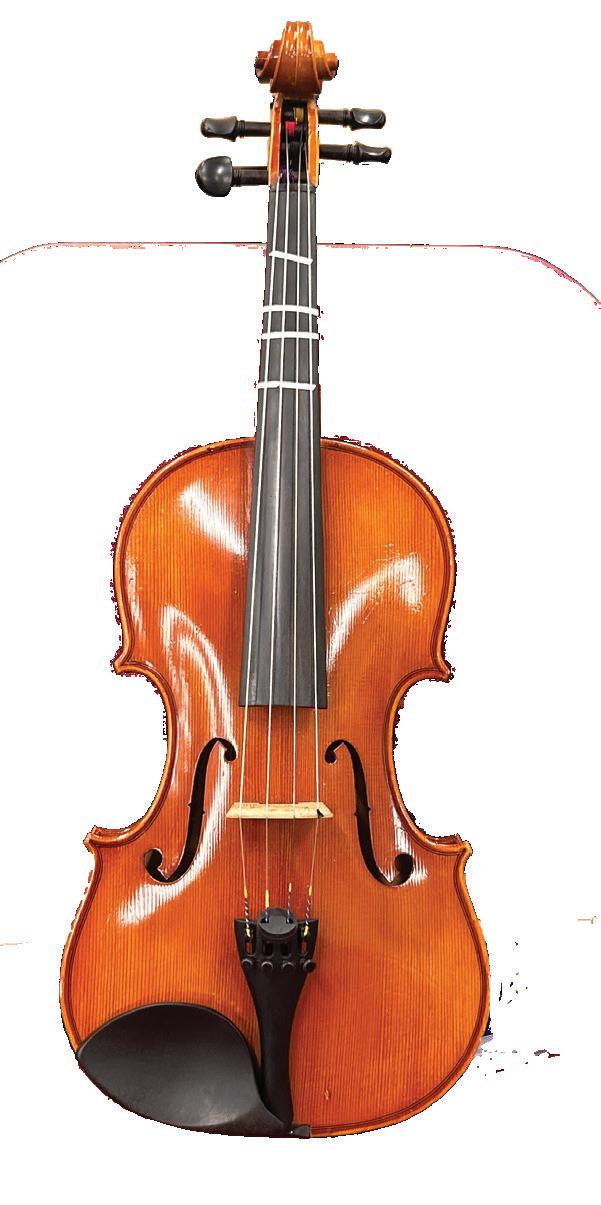
"I fell in love with playing the viola when was in sixth grade, due to its distinctive and unique tone. The orchestra has allowed for new friendships, especially during Covid when making new connections became more challenging. One memory value with my viola is from my eighth grade final concert at my old school in Plano. It was fun because we all enjoyed playing together, but also sad because it was the end of our time as a group orchestra. The music we played that night felt extra meaningful, and the experience helped to remind me how much music can bring people together."
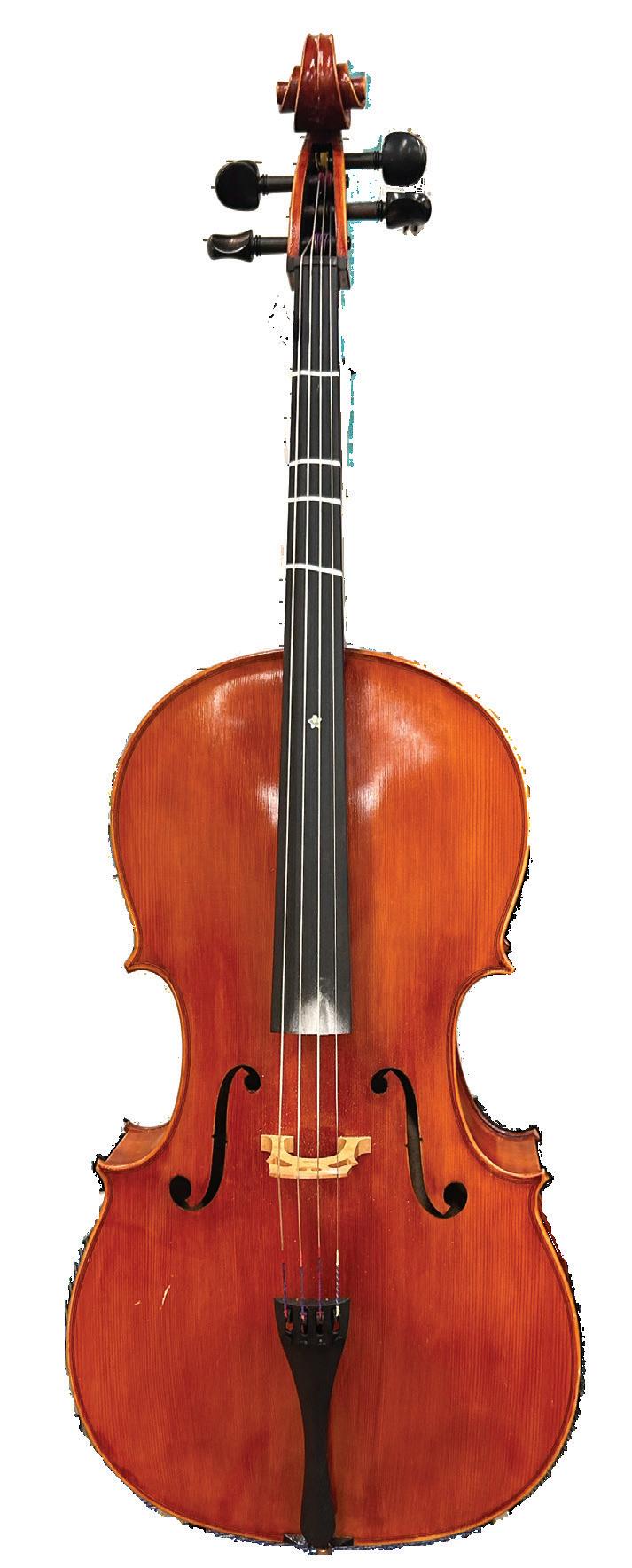
Ayaan Ali '27 Cello


Christopher Inglis '24 Cello
"My brother and wanted to play cello after Dr. Demian showed us a video of these guys on YouTube playing Thunderstruck. I stopped playing for two years after leaving ESD but I realized how much I missed it when I began playing again at ESD. Playing the cello is a good distraction from academics and sports and it helps me appreciate music in general more. Playing in the chapel was pretty fun... was happy to get out of my comfort zone. "
"I was inspired to play the cello because I have always liked music and saw a group playing the cello and gave it a try. I ended up loving it and really enjoyed it in seventh grade. It has changed my life because I have to devote time to it to become better but it is a way to get a break from something that I am doing and just a sense of peace."
by

For upper school student Mia Rodriguez*, therapy was no longer sufficient to help her fight the battle against depression. After 16 years of struggling to do daily tasks, such as getting out of bed or showering, Rodriguez was ready to find a new way to take control of her life.
“I’ve had depression my whole life and I was done living with it,” Rodriguez said. “I started going to a therapist first when I was around 6 years old, and they decided that just therapy was not going to help me.”
Especially today, students struggle with medical diagnosis processes as they can be extremely lengthy, requiring input from various professionals and numerous rounds of assessments. Rodriguez met with a child psychiatrist multiple times to decide on the prescription that would suit her best. Though she initially found the adequate dosage, she was occasionally reassessed to ensure the medication was still working as she grew up.
“I had trial runs where I would take medicine for like a week and see what my side effects were,” Rodriguez said. “I had to trial run three different types [of medications] and the last one worked the best. I’ve just increased my dosage as I’ve gotten older and grown.”
Patients go through vastly different diagnosis processes as each patient’s experience and needs are unique, causing professionals to adjust their procedures each time they encounter a new patient.
“In child psychiatry, many patients are referred from pediatricians, schools, testers or therapists,” Dr. Regina McFarland, a board-certified child, adolescent and adult psychiatrist and ESD parent, said. “There is not one single path that leads to a child diagnosis.”
Each evaluation process involves a comprehensive review, including assessments such as ADHD tests and mood screens to tailor appropriate interventions for the child and their family.
“Sometimes kids come in after a pediatrician’s mood screen at a yearly checkup or a school requesting that the parents seek an evaluation based on other student concerns, counselor concerns or teacher conferences,” McFarland said. “After meeting with the patient and their parents, I review an ADHD checklist and a mood screen as part of my intake paperwork. If I need to quantify a patient’s anxiety or depression based on their interview, I will typically do an anxiety or depression inventory as part of that intake session with the child.”
The testing diagnosis and prescription process for these various mood disorders and disruptive behavior disorders not only require thorough evaluation in a doctor’s office, but patients must also present these behaviors in learning and home environments.
“When you get diagnosed for ADHD, it has to be present [in the classroom],” middle and upper school Latin teacher Anne Fahrenholz said. “Your school teacher has to say that it’s present there and then it has to be present at home, so your parents have to say it, and then you also have to do a battery of two days of testing to say that it’s present. If it’s not in all three of those categories, then they’re not going to prescribe you medicine.”
Fahrenholz notices that a student might have ADHD when that student seems to have trouble focusing, completing their work or is distributive towards the learning environment. She is an advocate for supporting students with these differences, and even in her classroom, she has rubber bands under the desks and balance boards to help students with ADHD or anxiety cope during class time.
“In Latin in general, I think there’s been a message out, especially for dyslexic students, that this is a good language for them to take,” Fahrenholz said. “So, I feel like I get more students with ADHD or dyslexia than some other classes might.”
Teachers play a pivotal role in a student’s diagnosis process as they can provide a unique insight into students’ behaviors. Receiving this feedback allows doctors to further specialize their diagnoses.
“There always needs to be feedback forms from teachers,” upper school learning support counselor Ashley Beck said. “So we get direct feedback from how this child impacts the classroom [and] we get feedback from several of their teachers.”
Upper school student Reid Robinson* works his way through the page of math problems in front of him, carefully adding and subtracting values until he boxes his answer and moves on. Right when he flips to the last page, his teacher calls out, “That’s it for regular time! Bring your papers up.”
Robinson hands in his test with the page left blank. Robinson was diagnosed with ADHD and dysgraphia before the start of his freshman year but didn’t get prescribed medication or receive extended time until the second semester.
“I was having trouble finishing all of my tests,” Robinson said. “I would know how to do every step, [and] I just couldn’t get through the whole thing. I’d get to the last


page and have no time left.”
Receiving a diagnosis and accommodations made a difference for Robinson. He was able to finish assignments and perform better in class. Robinson also noticed that medication helped him stay more focused in social situations.
“Second semester, when I got approved for [ADHD medication and extra time accommodations], it was a big turnaround,” Robinson said. “There was a significant improvement in my grades and I was definitely a lot more focused on everything.”
While the tests and diagnoses carried out by a psychiatry office range based on specific concerns, schools such as ESD provide a general accommodation for all students as long as they have been diagnosed.
“As a school, we came together with [Ann and Lee Hobson Family Head of School] Mr. Baad and [Director of Emotional Wellness & Learning Support] Dr. Holmes and [found] mission-appropriate accommodations we can put in place for our students with these certain diagnoses that allow that student to partake in the whole ESD experience,” Beck said. “While evaluators may say this child needs triple time, we have made the decision that is more than we’re able to accommodate.”
The maximum extended time any student can receive at ESD is 50 percent extra time, reserving time throughout their day to fully participate in clubs, sports or extracurricular activities, instead of merely test taking.
“You can’t participate in a sport, you can’t be at clubs, you can’t do extracurriculars if you’re having to break down your test,” Beck said. “You know how tests hit sometimes, they hit all together [or] sometimes they’re spread out. It’s just not manageable.”
Medication is often the first course of treatment for kids with ADHD because, according to McFarland, therapy has not proven to be as effective. Inversely, therapy is the more common treatment for adolescents with depression, anxiety or other mood disorders.
“Medications are just another tool to help children who have significant problems with their mood or academic performance,” McFarland said. “If a child has been diagnosed with ADHD but not medicated, they run the risk of falling further behind or developing a mood disorder if they cannot compete in their sport or extracurricular due to poor grades.”
Mood disorders, such as anxiety and depression, and behavior disorders, such as ADHD, are the most commonly diagnosed disorders in adolescents, according to the Centers for Disease Control and Prevention. According to a 2021 study conducted by Joseph Tkacz and Brenna L. Brady published in the Public Health in Practice Journal, rates of mental illness in children aged 4-17 increased by 34.6 percent between 2012 and 2018. Anxiety, depression and eating disorders demonstrated the largest increase in diagnosis within that time frame.
“Most of the research is showing that, in general, the rates of anxiety are going up. And people don’t know if it’s social media or if it’s just our lifestyles that we have now,” eighth and ninth-grade emotional wellness counselor Mary Ellen Davison said. “I don’t think there’s been exactly one thing pinpointed as to why, but a lot of independent schools are kind of like a perfect storm of anxiety for students.”
The Americans with Disabilities Act mandates that schools support students with learning differences like dyslexia, dysgraphia or other diagnoses that may inhibit a student’s ability to learn.
“We are seeing a lot more anxiety popping up,” Beck said. “I do think this is all over the world, post COVID, anxiety is heightened. More people are paying attention to anxiety and mental health awareness. So I think that’s another reason why these diagnoses and anxiety are on the rise.”
Although mental disorders are being talked about more, there are still lingering misconceptions surrounding anxiety, depression and ADHD. Rodriguez feels that educating people about mental health should be a priority within the school community.
“Someone who’s depressed, they don’t have control over that chemically,” Rodriguez said. “You can differentiate a bad day from depression. It’s two different things, and it also affects your daily life, not just how you’re feeling. It affects your ability to do things.”
Rodriguez’s parents were hesitant to put her on medication, concerned by potential side effects. However, Rodriguez convinced her parents to approve her medication.
“My parents were struggling to understand what I was dealing with, so it took me a while talking to them about it telling them I need you to get me this help,” Rodriguez said. “They weren’t able to put themselves in my body and understand how I was feeling. It’s difficult but you just have to speak what you’re feeling so that people can help you.”
McFarland said that one of the biggest misconceptions she has encountered surrounding medication for mental illness and depression is that medicating for depression causes an increase in suicidal thoughts.
“If antidepressants increased the suicide rate they would not be on the market,” McFarland said. “In studies with children, some children reported an increase in suicidal thoughts when initiating medication. The actual rate of completed suicides decreased on medication but the starting period or after a dose increase is a risky time for bad thoughts.”
AS




Freshman Brandy Simon* has been on ADHD medicine since she was in the fifth grade. She feels that it has significantly helped her focus
However, whenever she takes her medication, she sometimes finds herself
According to a May 6 poll, 22 percent of 125 upper school students take anxiety, depression or ADHD medication, which helps foster a happier environment. Since Rodriguez began taking antidepressants, she has noticed that her overall quality of
“I can actually get out of bed in the morning and do the daily tasks that before [taking antidepressants] would be so hard for me to do,” Rodriguez said. “I don’t feel like I have this heavy weight on me all the time and can enjoy my days.” nighttime rolls around. Because she takes her medication in the morning,
definitely scary, but it makes me glad that I am able to take my students. For people with ADHD, one might“save up” their medication to take before a big test or exam, to take a higher Upper school student Cherry Patterson* does not take her prescribed ADHD dosage every day, but instead, only takes it on days that she has a test or quiz in school. She takes double her prescribed amount on the days she has final exams. According to an article published in 2012 in Brain Behavior by Shaheen
“Even though our school’s drug tests flag if a student has taken too much Adderall or more than their prescribed amount, we don’t assume that misuse is not happening here,” Davison said. “Sometimes students come in and share with us if they’re struggling or want help. It’s not a discipline issue, it’s a mental health issue that needs to be addressed.”
However, many students and faculty members feel that societal stigmas are more relaxed and learning differences and medication use are more normalized. According to Beck, 37 percent of the upper school population has a special learning
“I feel like [having learning differences] are more normalized because a lot of school, there are so many accommodations now and I think the fact that many of Davison has returned to ESD this year as a counselor after working at other noticed that the stigma towards learning differences at the school has become more recognized and socially accepted. She feels that most of the time, students feel
“My guess is that something like ADHD probably went under-diagnosed for a long time,” Davison said. “But also we don’t know if the reason why ADHD among teens is increasing is because people are spending more time on screens. It feels like more people have anxiety and depression, but is that because we’re looking for it?” ESD as a school takes extensive measures to ensure that every student’s learning environment is productive and beneficial to their abilities. According to Beck, learning accommodations are not meant to advantage specific students with learning differences, but to “even out the playing field.” Beck emphasizes that no student at ESD should feel that something is wrong with them, so she, along with the administration, encourages students who feel that they need And Rodriguez agrees. From experience, even though she was hesitant to get help, she is grateful that she did and encourages students who may “I think if anyone is struggling, either in school or mentally, [they should] seek help,” Rodriguez said. “It’s not something anyone should have to deal with on their own, so they should talk to an adult, either
*Nameshavebeenchangedtoprotecttheanonymityofthesource.

23
percent of students have been diagnosed with a learning difference like ADHD

21
percent of students have been diagnosed with depression or anxiety

37
percent of students have an extended time accommodation

22
percent of students are on medication for ADHD, anxiety or depression
SOURCE: Learning Support Office and May 6 poll of 125 upper school students

The Eagle Edition editorial board expresses opinion regarding senior exit interviews
The staff stance reflects the opinion of the Eagle Edition staff, and it does not reflect the opinion of the school, newspaper adviser, faculty or staff.
The countdown to graduation is getting closer and seniors anxiously await the moment to put on their caps and gowns, ready to become official ESD alumni. While graduation may conclude four years at ESD, for some seniors, who have been here since “beginners,” graduation is the culmination of 15 years of being an Eagle. With emotions high and seniors reflecting upon their years at ESD, the Eagle Edition staff believes that senior exit interviews provide a valuable experience for those graduating. These interviews allow them to express their opinions before they leave the “nest” and prepare to embark on a new chapter of their lives.
After seeing the value that exit interviews brought to his former school, Woodberry Forest School in Virginia, former Clark Family Head of Upper School Henry Heil asked Head of School David Baad about bringing these interviews to ESD two years ago.
Heil and Baad successfully conducted two years of senior exit interviews with seniors who chose to participate. During these interviews, Baad and Heil asked questions to small groups of seniors to reflect upon their time at 4100 Merrell Rd. The groups were made up of four to five seniors the first year the interviews were introduced and limited to three students the second year, because they felt smaller groups were more impactful.
Additionally, after hearing feedback from the first year of interviews, Baad and Heil gave groups the option to have Merredith Stuelpe, associate director of emotional wellness, join the interviews, if they wanted to have a female in the room. Whether it be discussing a fantastic teacher, making a suggestion or describing their positive and negative experiences, these interviews truly allowed all participants' voices to be heard.
“ These interviews can provide a meaningful way for the administration to hear how teachers impact and make a difference in a student's ESD experience.
After Heil left at the end of last school year, seniors were unsure if these interviews would continue. Current Family Clark Head of Upper School Matt Peal wanted to ensure that these interviews were kept after hearing about them earlier in the year.
The interviews have already begun and are being conducted by Peal and Cindy Newsom, director of admission and enrollment management, with groups of six to seven seniors. Peal thinks these interviews are essential, because he is experiencing something new every day, and he agrees with the Eagle Edition staff that these interviews are a part of a new ESD tradition that must be kept.
Exit interviews are voluntary with participation at around 50 percent in previous years. We believe that more seniors should participate and let their voices be heard as everyone's experiences are unique and provide a new meaningful perspective and reflection to the administration.
Exit interviews are not unique to ESD. Many businesses conduct exit interviews with departing employees. In an article published on SHRM.org, an organization striving to empower workplaces and maximize human potential, the EOS worldwide integrator Kelly Knight and the visionary at EOS worldwide, Mark O’Donnell, wrote in their article, “Don’t Underestimate the Importance of Exit Interviews,” that they believe exit interviews provide a time for companies to reflect.
“When looking for ways to improve your hiring and recruitment process, exit interviews might not immediately spring to mind,” Knight and O’Donnell wrote. “However, they’re an excellent opportunity to hold up a mirror to your company and see what’s working and what
Lauren Shushi and Iris Hernandez discuss historic

Most recently in the music industry, Iris’s and my attention has been grabbed by the popular music battle between rappers Megan Thee Stallion and Nicki Minaj.
This all began when many fans interpreted a line in Megan’s song “Hiss,” released at the beginning of this year, to be an insult toward Minaj. In retaliation, Minaj released the diss track “Big Foot,” directly attacking Megan. From the way that many reacted to this relatively small but entertaining music battle, Iris and I have decided to examine other historic music feuds and their impact on the fans and industry itself.


Before we jump into the clashes between artists, it is important to note that music battles can be a fun source of entertainment for audiences, however, the artists are still people who have their own lives and are deserving of a certain measure of privacy, even if they are celebrities. Although music can be an outlet for the feuds between artists and can create good music and fun interest, we must remember as an audience to keep it to the music and not send hate to musicians.
For instance, one of the most notorious music battles from our generation, and the first one to come to my mind, is the one between Taylor Swift and Kanye West. As many know, it all began when West infamously took the microphone from 19-year-old Swift during her speech for Video of
the Year at the 2009 Video Music Awards. Since that moment, the two were involved in a long and messy string of events that forever solidified their negative relationship. At one point, West’s fans were so against Taylor Swift that they flooded her social media with hate comments and emojis of snakes, implying that she was a liar.
For Swift, the antagonism by audiences forced her into hiding for a year.
“[It] took me down psychologically to a place I’ve never been before,” Swift said in an interview with Time Magazine in 2023. “I moved to a foreign country. I didn’t leave a rental house for a year. I was afraid to get on phone calls. I pushed away most people in my life because I didn’t trust anyone anymore. I went down really, really hard.”
While the negative experience inspired many of the songs on her sixth studio album, “Reputation,” the unfounded hate that Swift received is a lesson for fans to not jump on the hate train and submit to the “mob mentality” for artists who are still people behind the music rivalry.

band breakup in 1974, songs were released by both men that could be considered as mild “diss tracks” of their time.
Thankfully, the two made up before Lennon’s untimely death in 1980. This music feud comes to mind so easily because people loved these two iconic artists and hated seeing them fight. Due to difficulty sustaining good relationships within the band, along with fan’s intensity, it is understandable that the once loving competitiveness between bandmates could have turned into bitter resentment. The LennonMcCartney feud reinforces the fact that musicians often channel their negative emotions into music as their creative outlet.

When I asked my parents about iconic music feuds, they mentioned the rocky relationship from the early 1970s between John Lennon and Paul McCartney. With the unfathomable amount of fame and success that came along with being a part of The Beatles, sour feelings spread between the two that likely contributed to the band's demise. Then, after their
isn’t. Then, you can adapt your business for the greater good of your team and the customers you serve.”
While these interviews are conducted at ESD with graduating seniors and not employees leaving the school, they hold similar value as they allow the administration to reflect upon the positive and negative responses, to help improve the school. Heil noted that one of the most impactful things about these interviews was telling teachers that their name was brought up as being a very impactful teacher; he thinks every single teacher in the upper school was mentioned.
These interviews can provide a meaningful way for the administration to hear how teachers impact and make a difference in a student’s ESD experience. Likewise, teachers appreciate hearing that their name was mentioned by a student during the exit interview.
Peal also plans on discussing actionable things brought up in the interviews with the upper school leadership team. However, some seniors also feel like exit interviews would be more effective if conducted after graduation, as some do not feel comfortable sharing opinions before then and are afraid of repercussions.
Even still, more seniors should take advantage of this special opportunity and allow the administration to hear their voices and help the school plan for years

spurred on by social media.
Also, there are also music feuds that are driven by the media. During the 1980s, both Michael Jackson and Prince revolutionized pop music, becoming the biggest stars the genre had ever seen. In the 1980s alone, they produced a combined number of 30 top 10 hits, according to smoothradio.com. It is no surprise then that the media incessantly compared the two.
Despite efforts to collaborate on music multiple times that fell through, Jackson and Prince sustained a cold relationship throughout their careers, fueled by competition. The media exacerbated their rivalry tenfold, and this pattern has now repeated itself countless times. Most recently, the so-called “feud” between Sabrina Carpenter and Olivia Rodrigo has been mostly

After Rodrigo released her debut single, “Driver’s License” in 2021, fans speculated the song was about her past relationship with actor Joshua Bassett and contained lines referring to Carpenter. In response, Carpenter released her song “Skin” in 2021 where she shared her side of the story, singing in the first line, “Maybe we could've been friends if I met you in another life.” Carpenter has since then complimented Rodrigo’s song and the two seem to have no bad blood, yet online audiences and the media still pit them against each other, which Carpenter touches on in her 2022 song, “because I liked a boy.” Many fans of both artists agree social media has magnified this rivalry, and in such a case, it is critical not to add fuel to the fire.

No matter what genre or time period, it is certain that there will be artists who do not like each other and are vocal about their feelings. The music that can come from these creative clashes is admittedly entertaining and engaging to talk about online with friends and other fans of the music. However, it can be easy to cross the line from an interested fan to pushing the limits of privacy and losing sight of the artist’s personhood. We should remember as fans that music rivalries can be as simple as publicity stunts and that we can enjoy the music that comes from them, but we cannot get lost by sending hate to any musician.
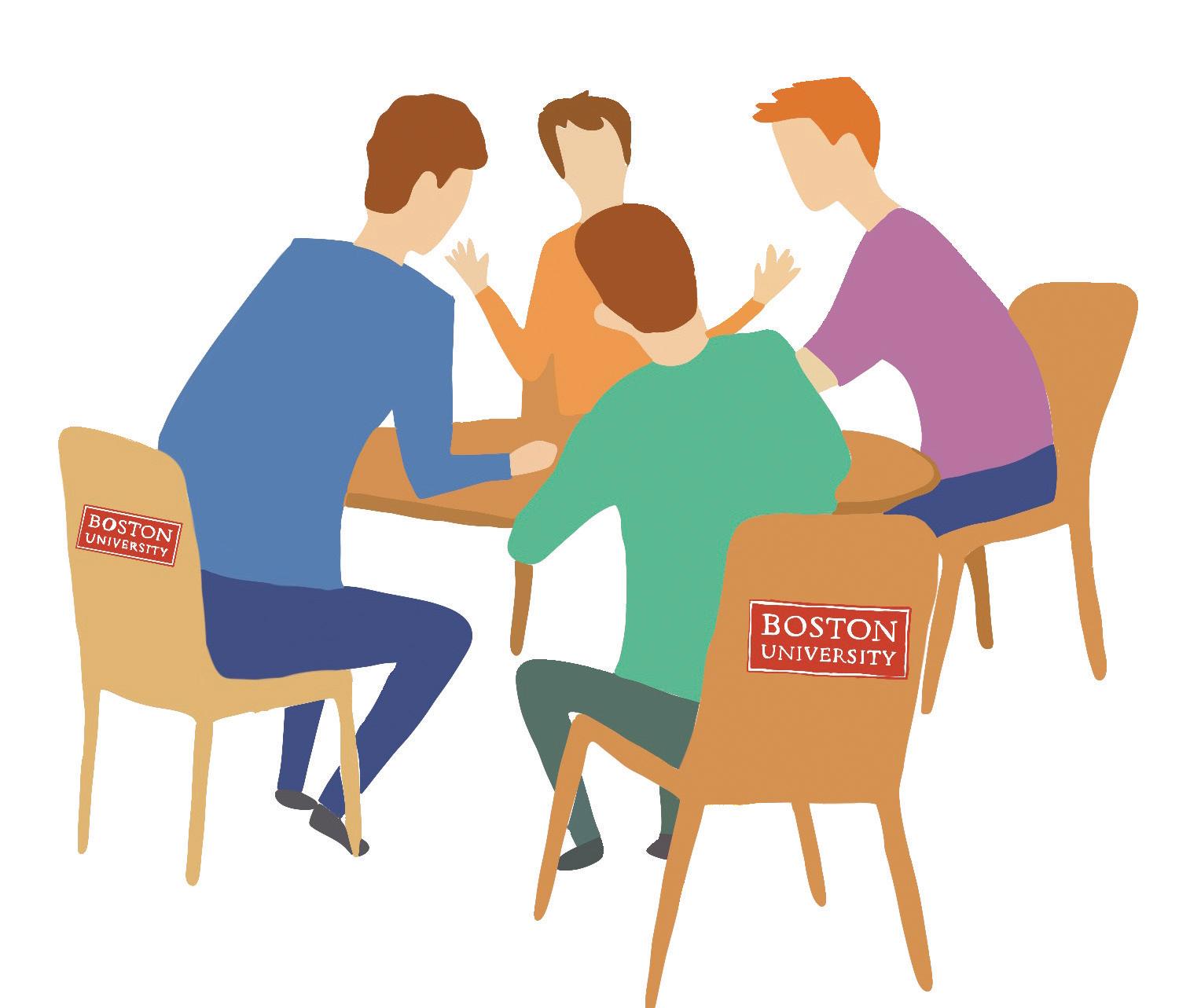
The earliest American colleges, date back to the mid 1600s and were small private institutions, laying the foundation for American higher education.
Professors taught a variety of classical skills, ranging from ethics and rhetoric to geometry and astronomy; this approach modeled that of the ancient Greek and Roman education. Students learned to think critically and view their world through different lenses, instead of focusing on a single major. Although liberal arts colleges have adapted over time, the focus on developing one’s worldview through a well-rounded education remains. Intimate class sizes, available professors and emphasis on undergraduate education all contribute to this goal.
According to an article by Calvin University, a liberal arts college in Michigan, “soft skills [taught in liberal arts colleges] allow graduates to adapt over decades to new kinds of work and new cultural settings and make wise decisions about social and political issues.” Conversely, large public universities place greater focus on fulfilling major requirements, encouraging students to develop a skill set tailored to a specific profession. In case of a career change, a larger breadth of skills, learned with a liberal arts degree helps one properly adapt to a new environment. Technical skills often become dated quickly, and 92 percent of employers value employees with “soft skills,” according to Best Colleges.
The classroom experience differs largely between large public and small private colleges. Teaching assistants rarely teach classes at smaller colleges,

allowing students to connect with their professors, possibly leading to internships or research experiences with their professors. Further, smaller class sizes create a safer space for questions and collaboration among students, similar to the learning environment at ESD. Instead of being crammed into a lecture hall, students learn in a classroom where they know their peers, an advantage highlighted during my tour of University of Chicago.
At smaller liberal arts colleges, students are members of a tight-knit community, fostering class bonds and maximizing opportunity. Leadership opportunities are plentiful without the excessive competition of a large public university, increasing community engagement. Although the athletic scene differs from larger universities, many liberal arts colleges have Division III sports; students have a greater chance of walking onto a varsity team and participating at the collegiate level, a rare situation at large Division I programs.
And the daunting price of small private colleges can be avoided after applying for need-based and meritbased scholarships. When one reaches their peak earning years, a liberal arts degree will pay a greater salary than a professional degree, according to Best Colleges. The investment of a liberal arts college will pay off. You should consider adding a few smaller, liberal arts colleges to your college application list, such as Amherst College in Massachusetts or Harvey Mudd College in California. You will receive the most valuable education, have an optimal learning experience and become a member of a tightly bound community.
Percent of students prefer small private colleges


WLarge public colleges allow for more opportunities and activitiesBy Emmy Moss | Life Editor
hen I think about college, the first thing that comes to my mind is a huge, new place with lots of people and upcoming new experiences. In every movie showing the “college experience,” there is the same storyline of an entirely unfamiliar place where you can reinvent yourself, something that is surely difficult in a small liberal arts college with 700-2,500 people.
While some people are more attracted to a smaller student population, the idea of attending a college with a large student body sounds to me like a chance for hundreds of other advantages, whether it is sports games, social events or just going to class. The experiences, which some people have deemed the purpose of going to college, are more lively and generally more fun in a bigger college that has access to more activities and athletics.
Larger colleges also have more nationally recognized sports teams, giving you an entertaining event to go to on Friday night, watching your football team crush a rival school. In addition to this, large public colleges also have more intramural sports if you are interested in playing but do not want to dedicate the time needed for a college-level team. Even if sports are not your thing, large public colleges also offer more club options, ensuring that you find a hobby.
Because of the wide variety of students that attend public colleges, there is also a wide variety of majors to choose from. For example, at the University of Texas, there are over 170 fields of study available to undergraduates, giving their students a huge amount of majors to choose from. In addition, large public colleges are state-funded, so a greater portion of their funding is directed toward research, giving students better access to facilities, according to CollegeVines, an organization that provides college guidance to through blog posts and live streams.
At a small liberal arts college with limited majors, one might be stuck in a class that they do not enjoy with the same people every day, instead of a more diverse curriculum.
According to the College Board website, class sizes in large schools on average are over 100 students, while small liberal arts colleges tend to have smaller class sizes because of the smaller population of students. On the surface, it seems great to have greater attention from a teacher. But, if one is running late or not in the mood to join in the conversation, the ability to sink into a crowd of other students is more appealing to me.
Greek life, which involves on average one-third of the student body, according to the Newport Institute, is another attractive feature at most large colleges. If interested in joining a fraternity or sorority, Greek life allows students to leave college with more connections and relationships.
Another big advantage of public colleges is the price of attending, compared to private liberal arts colleges.
According to the Education Data Initiative website, in 2023, the average cost for four years at a public college, along with living on campus expenses, was about $100,000, with 83 percent of students receiving some form of financial aid. At private colleges, the average cost for a four-year education including room and board, tuition and fees was double that of public colleges at about $220,000.
Beyond graduation, public colleges continue to have advantages compared to small liberal arts. According to Statista. com, a platform that collects statistics, reports and insight, private colleges leave 67 percent of students with unpaid student loans. Only 37 percent of students who graduate from public colleges have unpaid student loans. I know that a large college scene is not for everyone, but I believe that I want a place with more people, more affordable, bigger campuses and overall opportunities.
Percent of students prefer large public colleges









My mom bakes a wholesome blackberry pie every summer, so maybe I was unfairly comparing Central Market’s blueberry pie to my cherished childhood treat. But, I was immediately disappointed by the filling of this pie: it was extremely sweet and lacked any intact blueberries. I would compare the filling to a blueberry jam, not the texture or flavor profile I was looking for in a pie. However, I was impressed by the golden crust, topped with crunchy sugar granules. Acquiring this pie was convenient, and a mediocre option if you are in a pinch.



A bell chimed as I entered Buttermilk Spy Pie Shop and observed the quiet bakery, void of seating options or customers. Despite the emptiness, the wrap-around wooden shelves and warm lighting elicited a cozy atmosphere, mocking a small countryside shop. I ordered a mini key lime pie, one of the customer favorites. The graham cracker crust glistened with butter and held its shape, the filling was tangy and rich and the whipped topping provided another dimension of texture to the pie. Co-Founder Meredith Layton began baking mini pies at her grandmother’s house as a child, while her grandmother baked larger pies for the family. Her husband and co-founder was also raised baking pies, as his family made local fruit pies and preserves on their farm. The unique history of Buttermilk Spy Pies increased my appreciation for my mini pie, and I would recommend Buttermilk Spy Pies if you are looking to quickly pick up a highquality dessert.
4610 Long Prairie Rd #120, Flower Mound

4349 W Northwest Hwy, Dallas






Copy Editor Charlotte Traylor set out far and wide in hopes of finding the very best pie The review focuses on flavor, texture, atmosphere and service.

BIRD BAKERY
Nestled in Highland Park Village, marked by a striped awning and overflowing flower boxes, Bird Bakery Cafe draws in customers to enjoy a cup of coffee, a sandwich or a sweet treat. The interior of Bird Bakery is bright and clean; the floor and tables are marble, with emerald green and metallic accents, and the desserts within the display case are freshly baked daily. And, Bird Bakery is always swarming with customers, creating an energizing environment. As I scanned over the countless baked items, I was comforted by the fact that leftover treats are donated to charity each night. I selected the peach and blueberry pie, the only pie served warm. The crust was standard, but I enjoyed the creative filling, combining two fruits ripe in the summer and with different flavor profiles.
7A Highland Park Village, Dallas







I grew up going to the Emporium Pies in the Bishop Arts district once or twice a year, ordering a few pies with my family, a cup of coffee and scouting out a rickety table in the bustling shop. The crowded environment excited me, raising expectations for the pie’s quality -- which were consistently met. However, I visited the Emporium Pies in Deep Ellum, a newer location, on a recent Monday night. I had low expectations for the environment but was pleasantly surprised. A quiet chatter filled the shop, which was artistically decorated with vintage furniture pieces, exposed brick walls and dim lighting, contributing to a romantic ambiance. I ordered the Glazed and Confused pie, a lemon poppyseed chess pie. The crust was flaky, and the filling was tart and creamy, with a hint of almond extract. The pie was slightly too sweet and served at room temperature; I would have preferred the pie colder. But, I truly enjoyed the experience of eating the pie, and I would love to try other pies in the


2708 Main St #110,

An article released by the Washington Post in 2021 reported that Patricia Limbaugh enrolled her husband in an alcoholic rehab center, which had an abundance of great reviews on Google.
“[Her husband] would go and have a nice meal, a couple of glasses of wine and, or he’d get a bottle. And so, he drank the whole time he was there,” said Limbaugh.
“She felt deceived by the Google reviews,” according to the Washington Post. Although it is illegal, companies such as Yelp and Rotten Tomatoes continue to earn revenue from fake reviews. Fake reviews on review sites affect businesses and customers alike. However, when fake reviews reach independent practices such as hospitals or pediatricians, they become more than a source of revenue and can threaten lives.
Yelp, a site created in 2004 by two former PayPal employees, was originally designed for customers to leave wholesome and respectful reviews about businesses, restaurants, and everything in between. However, newspapers, such as CNBC and Time Magazine, have regularly accused the company of using unfair tactics to benefit businesses that are being reviewed on their site.
According to a Dec. 2023 CNBC article, “Fake reviews
are estimated to influence $152 billion worth of online spending annually.” When people check reviews on a new restaurant or movie, they are unaware that of all the recorded reviews 40 percent can be considered untrustworthy, according to the same CNBC piece.
Rotten Tomatoes, a film review site launched in 1998, is facing the same scrutiny as Yelp. In 2018, an article from the New York Times said that Rotten Tomatoes changed its policy to allow freelance authors, such as YouTubers and bloggers, to write reviews instead of accredited journalists. This change threatened the integrity of the site. Reviews on Rotten Tomatoes are calculated into the Tomatometer, which calculates the percentage of the positive reviews. The Tomatometer is sometimes a valid representation of the quality of the movie, while other times it is not. For example, in the film “Anyone but You,” the Tomatometer score was 56 percent; conversely, Google calculated that 87 percent of Google users enjoyed the movie. This trend permeates into the healthcare industry as well. Within the medical sector, fake reviews consist of fake patient reviews, making it difficult for real patients to find proper and reliable treatment. With the large presence of fake reviews on sites like Yelp, Meta, and Google, it becomes more difficult
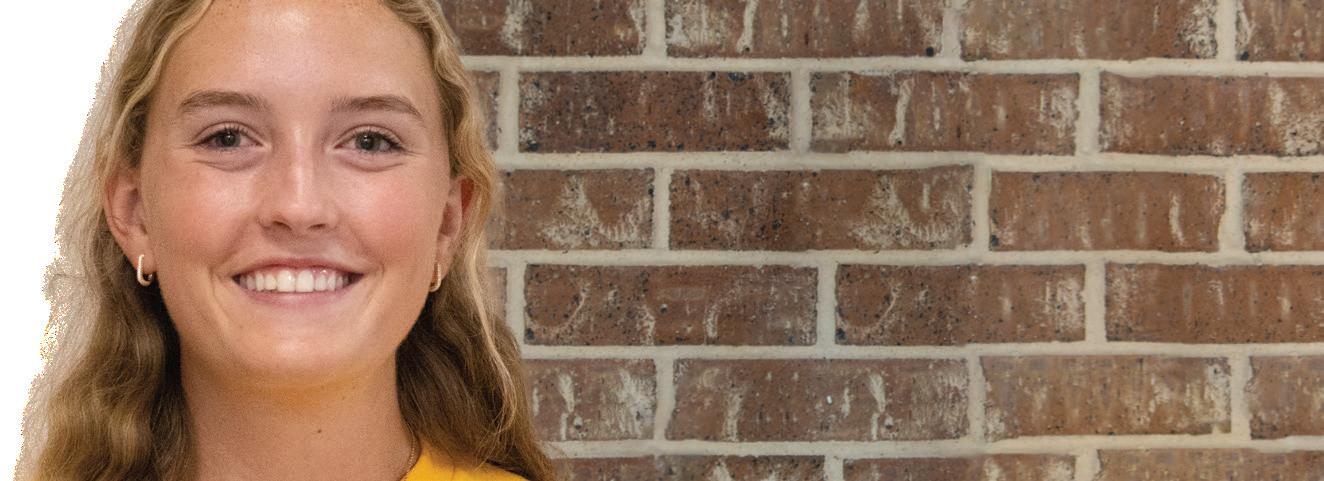

came time to start writing for the first issue, I already hit a mental block — a sign that I needed to change my idea. I went back to the drawing board, chose another one of the puns, Lovitt’s Love Its, and started from scratch.
This column would have a similar premise to the list, but I would only write about one topic that I love and specifically discuss the health, both physical and mental, benefits. I ended up writing about art, podcasts, the holiday season, random acts of kindness and journaling, and I felt it would only be fitting if I wrote about why I love ESD (in a list) for the last installment of my column.
Spirit: there is something to be said for the indomitable Eagle spirit. No matter if it is in athletics, fine arts or academics, a strong Eagle performance will always, undoubtedly, be met with a round of thunderous applause. After the “Anything Goes” musical, the school halls were buzzing with praise for the talented cast, similar to after the boys lacrosse team won the SPC title for the ninth time and when the National Merit Finalists were celebrated during chapel.
A 2014 study conducted by the Connecticut Association of Schools found that more spirited students “perform better academically, are more socially and civically engaged and are happier in general than their less-
to find valid medical care. Some of the fake patient reviews have the purpose of promoting a medical practice, but by doing this it does not give an accurate representation of the quality of the practice. The danger lies when a customer believes a false review, compromising their safety.
“
Online reviews are not trustworthy because they are not factual and verified by credible sources.
“When you rely on online reviews of medical providers, you’re gambling with your life,” Niam Yaraghi, a business professor at The University of Miami said to NBC News in 2022. Fake online reviews can be considered fraudulent behavior, which feeds into the credibility gap fake reviews create. But in some instances, review sites can have a net positive effect. Regarding small businesses, reviews from sites such as Yelp can attract customers. A Forbes article published in 2017 discussed the possible effect reviews can have on small
business ideas, concluding that over 90 percent of customers said that positive online reviews help them decide what to buy online. Small businesses on Yelp can manipulate their review ratings by urging customers to write reviews and respond directly to negative reviews. Negative reviews on review websites are rare. A Forbes article written on the positive effect of online reviews on small businesses stated that 66 percent of the reviews on the website are four out of five stars.
Online reviews are consistently not a reliable source for customers. However, if you look at review sites, there are steps to take to be cautious.
CNBC News composed a list of various ways to spot a fake review. Be aware of too many five-star reviews, check review writers’ history, be able to identify who the reviewer is, and be just as mindful of detailed reviews.
There are other ways, however, to find more reliable reviews. One option is to turn to newspaper reviews, which typically guarantee the credibility of a reviewer. Or one can turn to an existing customer or patient, to ask about their opinion and experience about the service or care they received. It is important to know that online reviews are biased and sometimes do not have a company's best interest at heart.


Testimonials may come from unreliable sources and should not be trustedBy Sheridan Bailey and Annabel Brown | Staff writers
in my back-to-school assignment, she told me that she remembered when I was born. My older brothers, Joe and Nick, were upper school students the year I was born and students of Salz. This story illustrates the strength of relationships between the ESD faculty and students. In 2022, the University of Missouri found that positive studentteacher relationships result in better teaching, and when teachers demonstrate soft skills, like social behavior, students feel more valued and are likely to retain material. Lower school teachers attend the sports games of students they taught a decade ago, and students stay in touch with their former teachers long after graduation.
Students: closeness finally, nothing is quite like the bond between ESD students, even across grade levels. Field hockey, soccer, track, newspaper, Itinerary and other clubs have allowed me to make connections with students of other ages. The time spent outside of school at tournaments, newspaper and magazine work days and other school-sanctioned events has helped strengthen the bond between students.
ESD has provided me with endless opportunities and countless connections, and I will look fondly upon my time spent here next year at college — I have loved ESD, and you should Lovitt too.

conflicts.
Dear editors, I know how hard you all worked on the last issue to illuminate such a touchy and complicated topic as eating disorders; I just wanted to say you guys did a great job putting the whole spread together. From descriptions to student interviews, the story gave a great basis for understanding the seriousness of eating disorders. I’ve struggled with disordered eating since I turned 13, which eventually led to a diagnosis of an eating disorder a couple of years later.
Eating disorders, in general, are very misunderstood, partly because there are so many different types of them but also because they affect everyone in different ways. Anorexia, for example, is one of the most misunderstood EDs. First off, it's not a weight disorder. Although the majority of movies and TV shows portray those struggling
with anorexia as severely underweight, that’s not always the case. For anyone struggling, your weight does not need to drop to a certain number for your struggles to be valid.
Another misconception is that anorexia is always driven by body image issues. Although that is common, it is important to know that eating disorders revolve around control. This control can be over anything, and a lot of the time, it can stem from something other than body image issues. For me, it started with the body dysmorphia I’ve had for as long as I can remember, but it grew from outside stress. My mom’s job was up in the air, and I was looking for any sort of sense of control, which happened to end up being food.
Overall, eating disorders can come from anywhere. And I want everyone to know that striving to have complete control over your calories and weight is a very slippery slope that ultimately won’t solve outside stress and
My favorite part of the last issue was the Press Box story which related to the center spread. Eating disorders are very prevalent in sports and athletics and are not talked about enough. By having a story like that one in the last issue, I think things are moving in the right direction regarding awareness. Exercise is great, except when doing it with the wrong motives. Working out to look a certain way can make it feel like a chore. It can ruin your relationship with something you used to enjoy. Exercise is best when you have a healthy relationship with it, but that can quickly go away with the pressures of being a teen or young adult at this time. As an athlete, I relate to some of the pressures to look a certain way. I often compare myself to teammates, wondering if I would be faster or more agile if I were smaller.
Looking back on it now, I know that is not the case, for when I was
struggling with eating, my athletic performance was at its lowest. I felt slow and easily exhausted all the time, and no one should lose their passion for something they love for a damaging cause. I know this is overstated, but the truth is that your weight really is the least interesting thing about you. If you feel like you have to lose or gain weight for the approval of others, then those aren’t the people you should be surrounding yourself with. I know there are social pressures everywhere, especially in high school, to look and act a certain way, but you shouldn’t feel like you need to change yourself to fit in or feel liked. The right people will love you for who you are, regardless of your appearance. To anyone struggling, I promise you are not alone. There are so many resources, hotlines like NEDA and even great counselors at ESD who can help you find the next step. You are enough, always.
schools.
The end of our high school years, but not our friendshipsBy Easterly Yeaman and Abby Baughman | Co-EICs
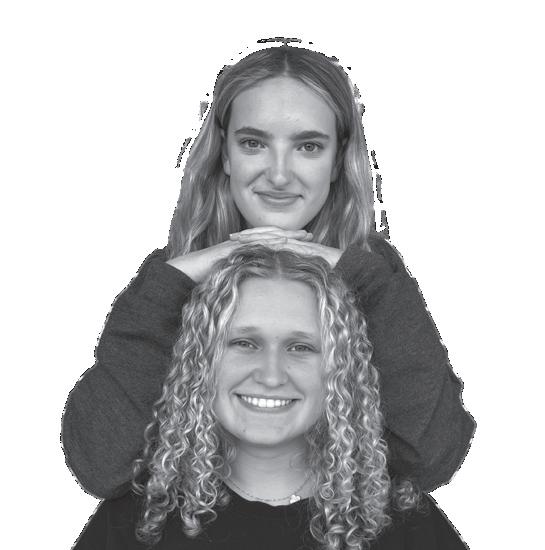
We cannot believe it is already our last letter from the editors. Graduating high school is bittersweet: it is exciting to look ahead to the next four years, but leaving your friends and family behind is hard. While parents will visit, text and call, keeping up with friends can be a bit harder. With all of our friends going to a variety of different schools across the country, we want to talk about the numerous ways we plan to keep in touch with each other.
Easterly: Obviously the best way to keep in touch is to visit each other. While we may all be pretty spread out, a couple of us are closer than others. For example, I definitely plan on visiting my friend Morgan at The University
By Cindy Linof Virginia which is only an hour away from me.
While Abby is a bit farther up the East Coast, we still plan to visit each other when our schedules line up. Sometimes, Abby is in school when I’m at home, so I can make a stop in New York before heading back to W&L and vice versa.
Not only does this allow us to see each other and catch up, but it also gives us the opportunity to take part in other college experiences. I wanted to go to a school with a big football scene, and obviously, at my D3, 1800-student school, that is different. However, I can be a temporary Aggie with Ava at A&M, a Free-Staters with Iris at KU, a Horned Frog with Sophia at TCU and a Razorback with Margaret at Arkansas along with other friends’
Abby: While I’m super excited about visiting all of our friends, I know that I will not be able to travel to them as much as I want.
That’s why I want to make sure we communicate with each other often through social media.
Last summer, my friend Dalyan and I were traveling and away from Dallas for most of the summer. I was in California while she was traveling around Europe. It would be assumed that she and I would drift apart and not talk as much; however, we sent each other videos of us talking about random moments from our day almost daily. We grew closer even though we had a six hour time difference and thousands of miles between us.
I hope to keep up habits like these with my ESD friends in college.
In one of our earlier columns, Easterly and I talked about how much we value experiencing new things with our friends, but I value our traditions even more.
Since middle school, we have done a Secret Santa and gone on a carriage ride through Highland Park. I look forward to this annually because we drink hot chocolate, sing Christmas songs and laugh together. We have vowed to make sure these traditions do not die and we see each other as much as possible over holidays.
We know seniors have been saying this over and over again recently, but we hope the underclassmen of ESD know how lucky they are to be surrounded by such great people. We know we will carry the bonds formed at ESD throughout our life.


Dashing
Senior Commitments
Ten seniors celebrate their recruitments to continue playing at the college level.
Page 26
Changes to the 3A division allows the team to be more competitive on the diamond
By Valentina Boltchi | Social Media ManagerThe crowd teemed with anticipation as senior Slaton Strey stepped up to the plate and prepared to hit. As the fans roared, Strey hit the ball out of the park and, as the adrenaline started to kick in, he touched on all the bases, until he made it back to home plate. After being down 3-0 to cross-town rivals St. Mark’s, the Eagles baseball team staged a thrilling comeback at home on March 26, ultimately rallying together to pull off a 7-3 victory in the last five innings of the game.
“I was in a bit of disbelief, I had never done anything like it so I was still near full sprint around the bases,” Strey said. “It was an exhilarating way to hype the game and my confidence for the next few at-bats.”
This win is one example of the successes the team has found in their season this year. From a winloss standpoint, the baseball team stands with a 7-3 record. This is the first time in quite a while that they have been that high above .500, or had a winning record.
“From a team perspective, the boys are more committed this year than they have been in the past,” baseball program director Gregg Bennis said. “I think it’s good that they are seeing success when they put more time and effort into it, hopefully that leads to them doing it in the future.”
The increased commitment by the players has also caused a boost in practice productivity, as it allows the team to work on teamfocused drills rather than personal skills.
“I think we've been able to work on more things in practice this year,” sophomore Lane Helle said. “During practices we can work on our plays rather than personal skills."
Two new coaches were hired to work with the team: Joshua Merrell, the pitching coach, and Bernard Murphy, who coaches all positions.
“I feel like our practices have been super productive this year since we got a few new people on the coaching staff who have really helped us out,” three year varsity baseball player, junior Johnny Willingham, said. “We now have two pitching coaches instead of one, and coach Bennis has definitely helped us boost our productivity.”
“
We've had a ton of great moments this year. For example, when we beat Oakridge 13-1, which was the first time in six years. I'm excited for next year.
and the team’s past successes and failures.
“SPC has seen our schools fit [3A] enrollment wise and commitment wise,” Bennis said. “We’re not playing against programs that are potentially at an advantage, so we’re on a level playing field.”
However, this division change does not impact the majority of their games, because they are not conference games. When the SPC conference tournament begins, the team will play two Houston teams in the 3A division, with the rest of the games being against teams in the 4A division.
“It makes more sense for us to be in the 3A division because of our enrollment,” sophomore Harrison Teegarden said. “Some of the schools in 4A have more senior players alone than we have players in the whole program.”
The team has also faced some challenges, one being the lack of lights on the baseball fields. This challenge has led to earlier game times, usually during students' practices. Because of these early game times, fan attendance was weak as many students were still practicing or attending their own games.
According to a May 6 upper school poll, 78 percent of upper school students reported they would attend the baseball games if the times were more convenient.
This success can also be credited to the change of the team’s division, from the 4A division to the 3A division. The divisions are determined by the Southwest Preparatory Conference, an athletic conference for independent high schools in the Southwest. The SPC typically determines divisions by looking at a school’s enrollment
"Not having a crowd at the games is pretty disappointing,” Willingham said. “We see all these other sports have a bigger crowd than us, but that’s because the lack of lights doesn’t allow students to attend.”
The earlier game times are also inconvenient for the team. With games immediately after school, the team did not have time to decompress, go to the trainer or

grab a meal before games.
“This is my second year on varsity baseball, and it’s always been a bit inconvenient getting out for an early game,” Helle said. “We don’t have a whole lot of time to go to the trainer if we have an injury.”
But the lack of lights also affected the team’s practices. They could only get a maximum of one hour and 30 minutes of practice before the sun went down.
“Due to the games starting at 4:30 [p.m] instead of 7 [p.m.] like football or lacrosse, we aren't able to prepare as much,” Willigham said. “The lack of lights shrinks our day, we would miss half of our warmup if we tried to go to the trainer before the game.”
Despite the struggles with the game times, the team looks forward to the annual team retreat that will be hosted at the Willingham family’s Santa Rosa Ranch in Henrietta, Texas. The tradition, which started last year, includes team bonding activities such as playing basketball, pickleball and wiffleball. Two coaches and the team all go on the reatreat in order to become closer.
“[The retreat] has really helped our team to be closer and come together,” Wilingham said. “It is good to be with the team outside of a baseball setting because it lets us become good friends and not just teammates.”
With the end of the spring season near, the baseball team looks back on their successful season and looks forward to the program’s future.
“We’ve had a lot of great moments this year,” Willingham said, “For example, when we beat Oakridge 13-1, which was the first time we beat them in six years. I’m excited for next year.”
Percent of upper school would want to attend games if they were scheduled more conveniently
Percent of upper school haven't been able to attend baseball games this year
On The Mound Two year varsity player sophomore Harrison Teegarden makes his first varsity start on the mound in a game against Grapevine Faith on April 16, 2024. "I was super excited to start and not very nervous, since had been preparing for months." Teegarden said. Photo provided by Harrison Teegarden
Do you feel any pressure rowing in a varsity boat?
“I feel a lot of pressure when row in the varsity quad because I'm the least consistent, so I can heavily restrict our performance when I'm not rowing my best. I also put a lot of pressure on myself when it comes to rowing because I'm just a competitive person in general, but I think the pressure I feel [has] made me become a better rower.”
When did you start rowing?
“I started rowing at the beginning of the school year this year because I had just quit tennis and wanted to try a new sport. My mom encouraged me to row because she thought it would be good for college applications, but after trying it, I actually really liked it and have been doing it ever since.”
Do you have a pregame routine?
“I don't really have any pregame rituals, but before races, I run, stretch and help to get my boat ready. We usually get to the regatta a day early to practice on the lake we race on to familiarize ourselves with the lake and racecourses. also always make sure to eat about two hours before the race and chug electrolytes to prevent cramping.”
What goals do you have for the rest of the season?
“My goal for this season is to go to Centrals and to have a sub 7:55 2k. also want to build a better relationship with the team and the people in my boats.”

How does it feel starting as freshmen on varsity?
“It's great starting on the fresher side, but [I don't really feel any pressure] because I know it's a team game and as long as I play my best game, I'll be
When did you start playing
“I’ve been playing lacrosse my whole life because my dad played in high school and he just had a stick in my hand my whole life.”
Do you have a pregame routine?
“Not really. I just listen to music before the game [and] I've been doing wall ball before every game.”
What goals do you have for the
“A team goal is [definitely] to win state. As long as the team's winning, I'm
How are you dealing with your
“I'm just staying off of it and trying to get it better. There's not a whole lot [I] can do but wait and try to get back
Sports Editor Charlotte Tomlin and Staff writer Ethan Pham join forces to share their perspectives about being student-athletes at ESD. Read their opinions in every issue, or tune in to the biweekly podcast!

When the news about the new kickoff and hip drop tackle rules popped up on my phone, I was in disbelief. I knew that the National Football League was discussing a possible change in the kickoff ruling, but I never expected that the league would actually make the change. After researching the kickoff rule change, I was disappointed. The NFL made the chances of scoring a kickoff return touchdown practically impossible because the kickoff team is now closer to the returner. The new rules were changed due to the increase of unreturned balls and high numbers of injuries on kickoffs, according to the NFL Operation website. Kickoffs were always one of the most exciting plays in a football game. There have been countless break out, game changing and momentum shifting plays in a kickoff. Returning a kickoff for a touchdown or making a big hit gets the side lines hooting and hollering, bringing energy to the team.
I love kickoffs because it helps players raise their stocks. During my freshman year, I had the opportunity to play with the varsity football team after four games allowing me to showcase how I could contribute to the team. I knew I was not going to start or play my normal position at tight end and defensive end at the time, so I tried to catch my coaches attention on kickoff. I began giving it my all in practice, and my coaches noticed, so I was played during games. Kickoffs are an amazing way for players who want to start on offense or defense to show their coaches what they are capable of doing. However, the new rules completely change the players' opportunities. There is less running and no open field, which was an advantage for the players.
Three time Super Bowl champion Julian Edelman caught Bill Belichick’s eye after being drafted 27th in the seventh round of the 2009 NFL Draft, one of the greatest coaches of all time. Edelman earned a spot starting on offense as a wide receiver because he impressed his coaches on special teams.
He became the number one receiver for the greatest quarterback of all time, Tom Brady. He was not handed the spot, but he earned it from his effort in kickoff.
I understand the league is trying to prevent injuries, because they occur so often on kickoffs; however, I do not believe there needs to be this big of a change. Injuries will happen regardless of any play in football: offense, defense and special teams. I believe a big part of the multiple injuries that occur in football are due to coaches not teaching the proper way to tackle. Since the proper ways of tackling do not have enough emphasis today, the league has to make new rules penalizing illegal forms of tackles.
The hip drop tackle has recently been banned from the league. If the hip drop tackle is done in a game, it is a 15 yard penalty and automatic first down for the tackled player’s team. A hip drop tackle is defined by the NFL when a player “grabs the runner with both hands or wraps the runner with both arms and unweights himself by swiveling and dropping his hips and/or lower body, landing on and trapping the runner’s leg(s) at or below the knee,” according to the NFL Operations website.
I am upset by this rule change as well. Now, defensive players will be worried about how they tackle a player in order to avoid a penalty. This will change the game more than people think because the new rule will put defenses at a huge disadvantage. Sometimes the hipdrop tackle is the only way to tackle a player. Defensive players, whose only option is a hip drop tackle, must make an instantaneous choice. They can let the player keep running and hope their teammate tackles him, or they can take a 15 yard penalty and give a fresh set of downs to the other team.
Tom Brady voiced his opinion to Stephen A. Smith on the Stephen A. Smith Show in November 2024, on the new tackle rulings and has the same opinion. Brady mentioned that he does not “see the excellence” that he saw in the past in an interview with sports television host Stephen A. Smith.
“I think the coaching isn’t as good as it was,” Brady said to Smith, “I don’t think the development of young players is as good as it was.”
Brady voiced his opinion on the rule changes and penalties on tackles. Brady mentioned that coaches are upset by how their players are tackled in games. However, he does not believe they should be upset because they should have taught their players how to defend themselves.
He explained that coaches used to teach the fundamentals of tackling and getting tackled in order not to hurt themselves. Now, tackling rules are becoming regulated, benefiting the offense leaving the defense at a disadvantage. These new rules are slowly leading to football becoming a controlled game. Previously, players were allowed to be physical without fear of getting a penalty. Injuries are not going anywhere no matter what rule changes. Players know if they step on the field they have a chance of getting hurt. The NFL needs to make a bigger emphasis on how to protect yourself on the field and work on those fundamentals. I understand these new rules are in order to prevent injuries, however these changes will influence the game negatively.
People today are too soft on players by making these new rules. Players should be taught how to protect themselves and not complain about getting injured unless it was out of their control.
Football is not all sunshine and rainbows: it is a physically intense game that is getting the child locks put on it.



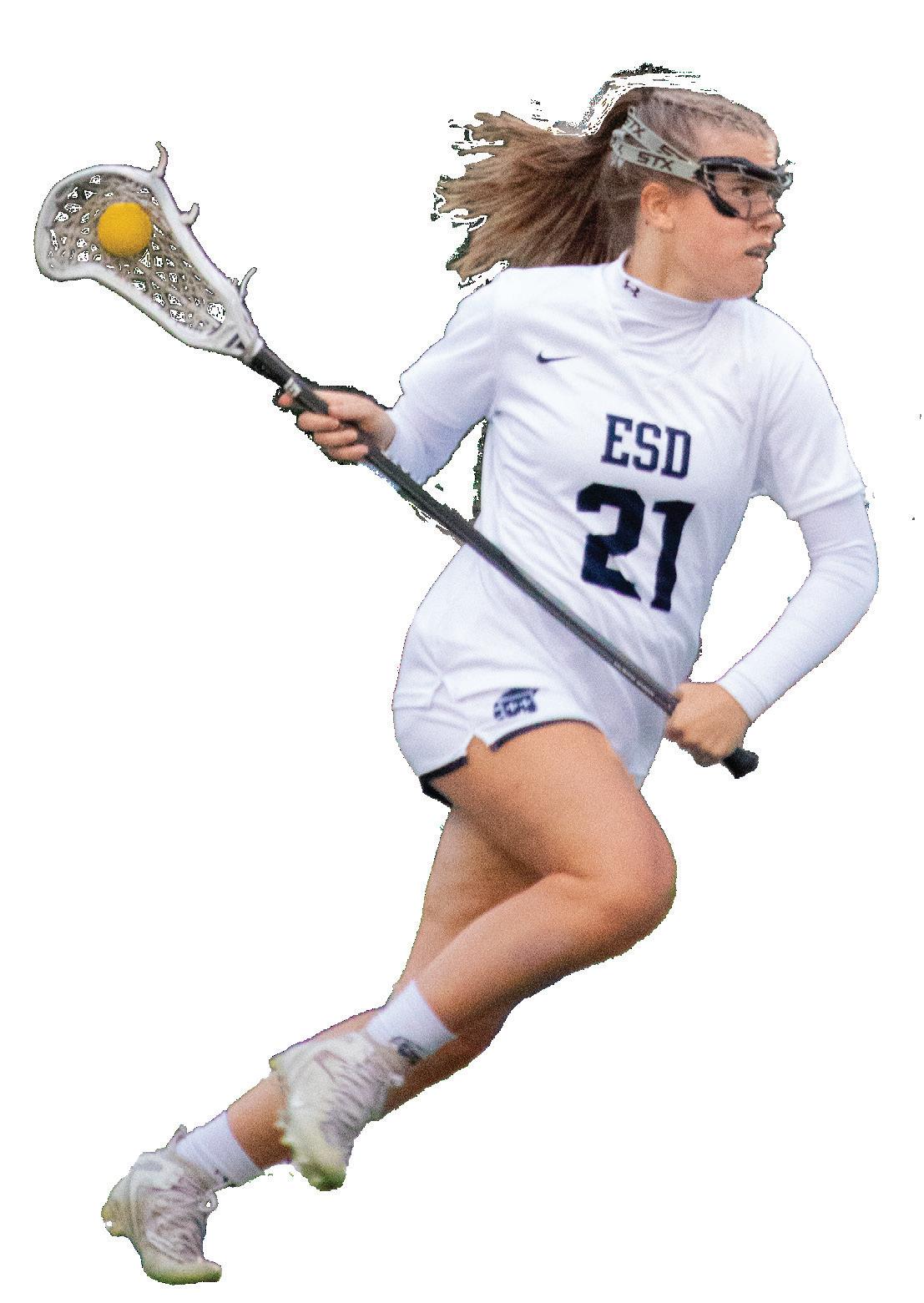
As the number one seed in SPC, both the varsity boys lacrosse team senior captain Sean Browne and head varsity lacrosse coach Jay Sothoron were excited to host the SPC tournament on April 19 and 20 at the Gene and Jerry Jones Stadium.
While the team was preparing for the tournament, Sothoron knew the team was not yet at its peak.
“I think we have been a little inconsistent,” Sothoron said in early April. “But generally speaking, we're always better in the month of April. So I think if we can get healthy, I think we're gonna be in good shape. I think we're trending in the right direction.”
Browne was confident in the team's abilities as well. He said that they were also preparing by watching films of previous games to get a better understanding of their opponents.
"I keep practicing, keep working hard and getting all the extra [repetitions] I can,” Browne said. “But I think we're on the right path.”
This training paid off during the tournament. During their first semifinal game against St. Mark’s on April 19, the Eagles beat the Lions 14-3. The following day, they played the championship against the St. John’s Mavericks and beat them 15-3. This marked the Eagles’ ninth consecutive SPC victory.
Athletic Director Thad Lepcio was “pleasantly surprised” with the team's SPC victory, as this was his first year at ESD and in the SPC.
“I think that demonstrates we're a very talented team,” Lepcio said. “I appreciate everyone's patience with the crazy weather. But it was clear that we were the best team in the SPC this year.”
Assistant Head of Upper School Max Augé adapted that day’s academic schedule to allow the upper school community to attend the game, as it took place during the school day.
“I think it was fun that the upper school allowed the students out of the class,” Augé said. “I think that's what athletics can do in terms of building community. I was so proud of how our student body responded.”
The boys lacrosse team maintained that momentum. On April 25, the team played their biggest rival, the Highland Park Scots, as their last regular season game. The Eagles once again were victorious and defeated the Scots 7-6, creating a confidence boost leading into the state playoffs. On Friday, May 3, the boys lacrosse team played the Jesuit Rangers for the state quarterfinals, winning 13-9. The win against the Rangers sends the Eagles to Houston to compete for the state semifinal on May 11.


Going into SPC, freshman lacrosse player Ryleigh Ferguson had high hopes for the team in the tournament.
“I think we've been preparing great, the team is definitely coming together,” Ferguson said. “ [We’re] fixing all of our final touches. We've prepared a lot for this game specifically. I think we're going to have a great SPC.”
In order to beat Hockaday, their biggest rival, Ferguson said that “the team was definitely coming together, like fixing all of our final touches.” Ferguson believed that they could “stomp the daisies” at SPC if they got the chance.
Similarly, varsity girls lacrosse coach Faith Renner did not doubt her team going into the tournament, with a game record of 7-3.
As SPC got closer and closer, Renner also said that the more experienced girls had led the team in a remarkable way.
“Our upperclassmen have been fantastic leaders over the last few weeks and our underclassmen are impacting the field very strongly as well,” Renner said. “Our team defense has been improving and chemistry on offense has been a focus for the last two weeks.”
On April 18 at 3 p.m., the girls played against the Episcopal High School Knights. The Eagles defeated the Knights with a score of 17-7. Freshman varsity player Kate Lewis recalled sophomore Ryder Sand’s goal and junior Katherine Clark’s assist during this game.
“[She] gracefully whip[ped] her stick behind her back to score her first [behind the back] goal of the 2024 season,” Lewis said.
The following day, the girls put up a strong fight in the semi-finals against the St. John’s Mavericks, resulting in a loss for the Eagles of 11-10 in overtime. The Eagles started off strong, mostly leading in scoring during the first half.
However, the girls received four yellow cards during the second half of the game, forcing these four girls to sit on the sideline for two minutes each. By the time the fourth yellow card was issued, the team could only play with 10 players on the field instead of 11. Despite this obstacle, the team continued to fight; they fought until the end in double overtime. The team hopes this defeat will only fuel them going into state championships next weekend.
In addition to girls and boys lacrosse, the ESD Track and Field team put up a fight at SPC on May 3 and 4 at Greenhill.
Cross Country and Track Program Director Evan Hadrick said the team had performed really well and started the season off strong.
“We have a similar number of athletes qualified to last year even though we've probably had about 10 less athletes on the team,” Hadrick said. “We finished our regular season with 18 athletes qualified… so I am happy with what we have accomplished so far.”
One of the top athletes to qualify was junior Brooklyn Singer who earned second place in the 100 meter and fifth in the long jump at the Greenhill Open Meet on April 13. Leading into SPC, she was confident in her and her team’s abilities to compete.
“I think a lot of us have improved even from just last year,” Singer said. “I think all of us are going to do pretty well and definitely be able to hopefully place.”
The team ended up doing well at SPC, with the girls team finishing sixth.
“Overall I was happy with how our team performed,” Hadrick said on May 5, following SPC. “Our boys team didn’t finish as high as they did last year, but we graduated some huge contributors last year, and dealt with some significant injuries on both teams that took out some important athletes as well. Despite the adversity, our team still had some inspiring performances and represented our school well.”
For Singer, her training paid off as she ran a 12.57 seconds in the 100-meter dash, earning her a bronze medal. She also ran a 26.28 seconds in the 200-meter dash, earning a second bronze medal, playing a pivotal role for the team.
In addition to Singer, junior Cheney Mathes also performed well at SPC, earning a gold medal in the long jump and sixth in the 100-meter dash. Mathes became ESD’s first individual SPC Champion since 2018. Moreover, junior Sebastian Guzik contributed to the success of the track team.
“Sebastian Guzik was an iron man for the boys team, competing in six events and scoring points in four of them.” Hadrick said. “Nick Wheeler also ran four races on Saturday and anchored both relays.”
However there were mishaps during the tournament. The team lost a runner on May 3 due to an injury, so the girls were not able to run the 4x100 meter relay. Junior Phoebe McMillan competed in the long jump, jumping a personal record of 16 feet 7.75 inches and securing fourth place. But on her third attempt, she sliced her thigh with her spikes and needed stitches, so she was unable to run the following day. Regardless, SPC still celebrated successes. Hadrick believes that his athletes performed well and didn’t think they left much on the table.
“We had a strong season," Hadrick said. "I’m proud of what my athletes were able to accomplish.”

For 10 seniors, their dream of playing a college sport will come true next fall. Because of their athletic excellence, Sean Browne, Eddie Ellefson, TJ Gatchell, Reese Harrison, Nick Inglis, Christopher Inglis, Camden Konradi, Xavier Monteiro, Caroline Prestidge and Hunt Sands were recruited to continue on that path at the college level. Universities conduct evaluations and proceed to send out offers and scholarships to individuals they are interested in. These 10 students are highlighted for their dedication and talent in their respective sports. For many, pursuing their sport in
college has been a consistent dream and goal for them. They all acknowledge with gratitude the significant role played by their coaches and teammates, whose support and guidance have been invaluable on their journey to get where they are today. As their time at ESD comes to an end, they reflect on their difficult yet rewarding recruitment process that has brought them to this point. They embrace the challenges and opportunities that lie ahead, setting new goals and aspirations as they prepare to embark on the next chapter of their athletic careers entering college.

"My coaches and teammates have pushed me to be my best and chase my goals. Without my ESD coaches, especially Coach Sothoron, wouldn't be where am today."

"The combination of school, lacrosse and social life was the perfect balance I was looking for. wanted to go somewhere where could win a national championship and get a good education at the same time."
"The recruitment process was stressful, but exciting. had to go to so many showcases and tournaments to get noticed, however, once I started getting texts/calls from coaches it was such a rewarding feeling."



Caroline Prestidge SMU Cheer


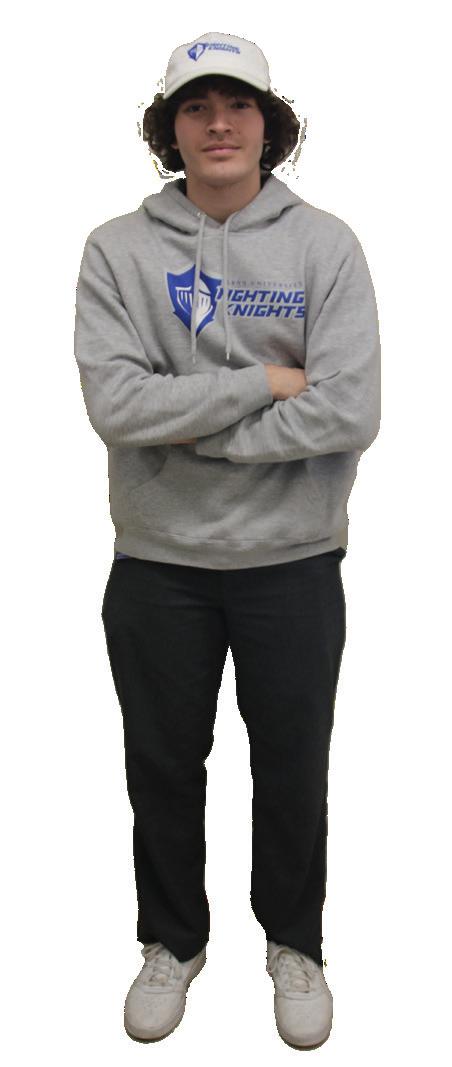

"I have always seen myself as being an athlete as long as can because sports are extremely important to my general happiness so I haven’t ever considered myself not playing sports in college."
"I was iffy about cheering at first and then towards the end of my senior season I realized it was over. I also would go to college football games and would wish I was able to be down on the field."
"I visited a couple schools in the fall and then Westminster in January. After visiting Westminster fell in love with the place and have been committed there ever since."
"I wouldn't be where I am today without my coaches and teammates; They definitely have made me the player am today."
"I started playing lacrosse when was seven. My parents first introduced this sport to me, and I’ve stuck with it since."
"I always wanted to play lacrosse, and it has been a dream of mine. I was on the fence about it until realized I could go to Florida and still compete at the highest level."
New kickoff rules in response to player safety issues aim to reduce injuries on kickoffs
By Ethan Pham | Sports EditorFootball players are often injured by a big hit or a dirty tackle, which can end players' seasons. These injuries have become so tragic and common that it has been brought to the National Football League’s attention. With growing concerns about player safety, new changes have been introduced to the game to prevent player’s injuries.
The NFL took note of how The Extreme Football League does their kickoff. The XFL was founded in 2001 by former WWE owner Vince McCahon. The XFL, a professional sports league that gives the opportunity to players to keep playing football if they do not make it to the NFL, has different rules from the NFL in regards to kickoffs. A kickoff occurs in the NFL either at the start of a game, after a completed touchdown or field goal and at the beginning of the second half.
In a kickoff, one team the ball to the other team to give them possession of the ball. Usually, the kicking team will line up 10 of their players on their own 35 yard line or lower. The ball is teed up on the 35-yard line for the kicker to boot off to the other team. The kicking team's objective is to sprint down and tackle whoever received the ball on the other team. There are 22 players on the field, one kicker, one returner, ten players trying to tackle the ball carrier and ten people trying to block the tacklers. However, the other team tries to block players running down the field so the ball carrier can make it as far as possible.
There are many detrimental injuries during the NFL season on kickoff. According to the NFL’s website, there have been 219 concussions in the 2023-2024 season from practice, pre-season and regular season.
Teams have begun calling a fair catch instead of returning the
ball. A fair catch is when the player receiving the ball waves their hand signaling they are not going to return the ball. The returner must catch the ball and the play is over. The offense will take over at the spot where the ball was caught. Fair catching has become more frequent, which caused kickoff injuries to decrease.
"We believe that you can increase the return rate substantially and not increase the risk [of injury] beyond that found on your typical rush or pass play,” Jeff Miller, the NFL's executive vice president overseeing health and safety, said in an NFL interview in January 2024. “And so we need to design something to do that. I think we share the same perspective as the committee, which is to say that's the goal. And we want to make that an exciting, fun play because kickoffs can be, and yet extract the pieces of that play that provide the most risk."
According to the NFL website, concussions on kickoffs decreased 60 percent when a fair catch was in place. Concussions decreased because the play was over faster, and there was not reason to hit anyone.
The NFL has been told to cancel the kickoff completely, however the NFL Competition Committee spent time in the off season searching for a beneficial change to prevent injury instead of getting rid of the kickoff entirely.
Commissioner of the NFL, Roger Godell believes the new rule changes will bring more excitement to kickoffs. "I think it will be a big improvement," Goodell said in an NFL interview with Kevin Patra in March 2024, "I think that it will bring the play back into a relevant play, an important play and an exciting play. I think we can do it where the injury rate hopefully will drop."
The NFL chose to make a change in their kickoff rules to
address the issue of low kickoff return rates and the high amounts of injury. The new rules are in place to keep the excitement of a kickoff still in the game while preventing more injuries.
ESD’s head football coach Richard Williams is all for players safety and likes that the NFL is trying something new.
“Anything they can do to make the game safer I’m for,” Williams said. “I also would like for there to be more kickoff returns. I think it's gonna make the game more exciting. So for that, I'm looking forward to seeing how the percentage of kickoff returns goes up.”
“ We've had a ton of great I'm all about player safety, if the data supports it, it's going to be safer.
Thad Lepcio Athletic Director
Athletic Director Thad Lepcio, along with Williams, thinks the change will be beneficial.
“I'm all about player safety,” Lepcio said. “If the data supports it, it's going to be safer.”
Lepcio also believes that if the new rules decrease the numbers of injuries, the rules will trickle down to the high school and college level.
“Typically high school is always one or two years behind the NFL and the college changes,” Lepcio said. “I think something will change. I think the data would indicate the high percentage of
injuries happen on kickoff, so I think it's probably coming our way within the next couple of years.”
The kicking team will kickoff from their 35 yard line into the landing zone. The landing zone is the area between the receiving team's 20-yard line to their end zone. The kicking team lines up ten players on the receiving team's 40-yard line. A minimum of nine players on the receiving team will line up between their own 35-yard line and 30-yard line. If the ball lands in the landing zone it must be returned by the receiving team. If the ball bounces from the landing zone into the end zone, it must be returned by the receiving team for a touchback and possession at their 20-yard line.
A touchback occurs when the ball is caught in the end zone, and the team chooses not to return the ball, so it is placed at the 20-yard line. If the kick doesn’t reach the landing zone, the receiving team will automatically start on their own 40-yard line. If the ball lands in the air in the end zone, the receiving team can return it or elect to start at their own 30-yard line. If the ball goes out of bounds without getting touched the receiving team gets the ball at their own 40-yard line.
In simpler terms, the kicking team is moved closer to the returner and blockers so it reduces the amount of open space so the returner will have time to catch the ball and look around instead of getting five players immediately trying to tackle him.
Another impactful rule change is the hip drop tackle,a maneuver where a player “grabs the runner with both hands or wraps the runner with both arms,” according to the NFL.
These new rule changes in the NFL are in place due to the high amount of injuries that happened in the past on these certain plays and tackles.












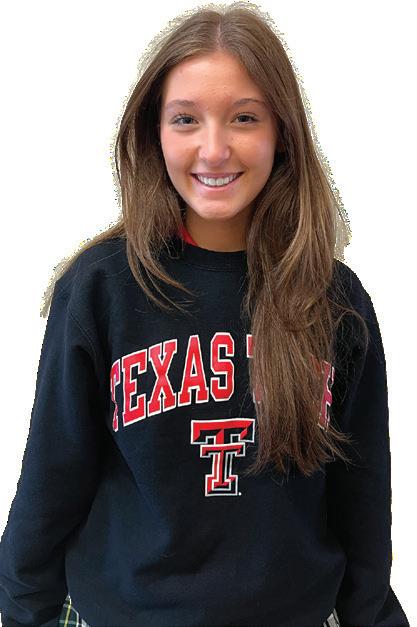
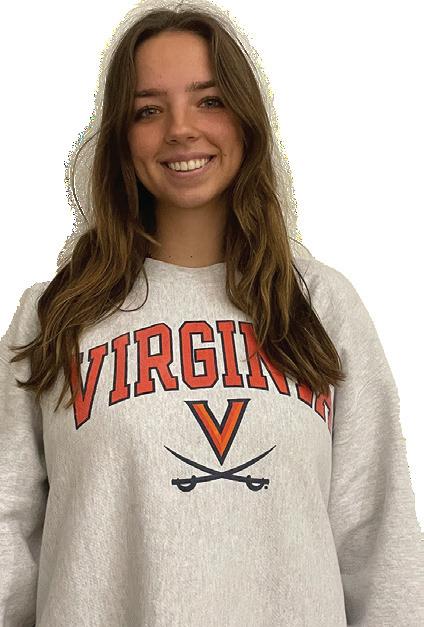







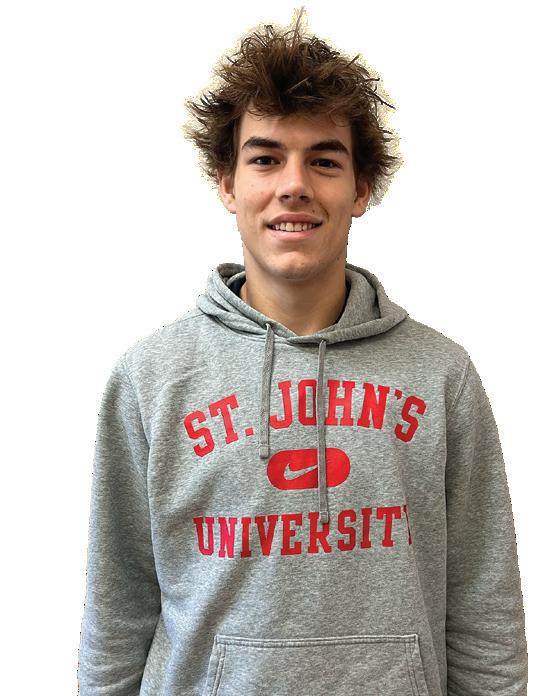
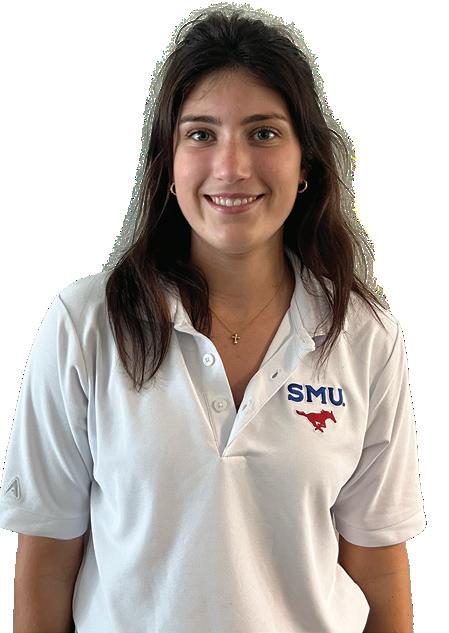













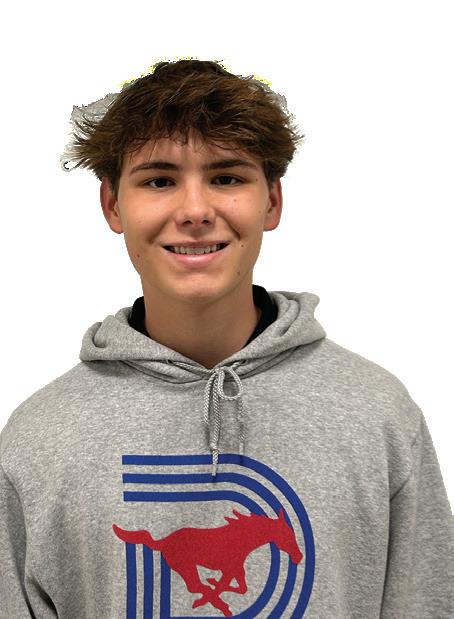







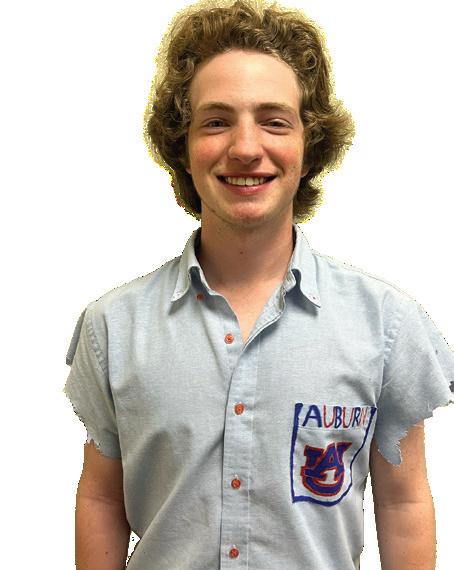

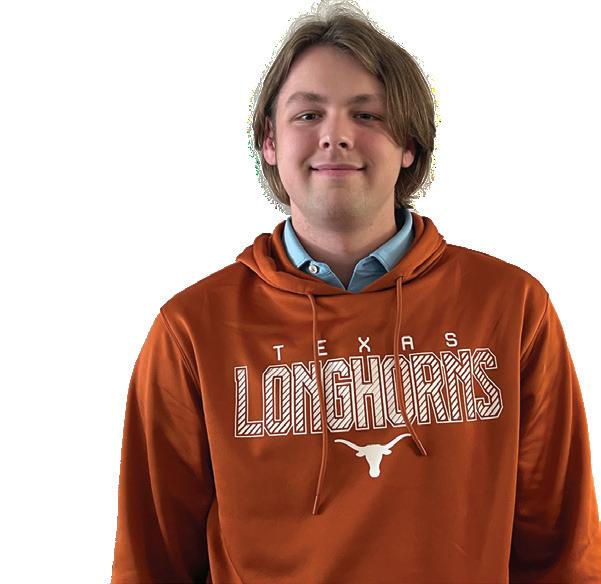







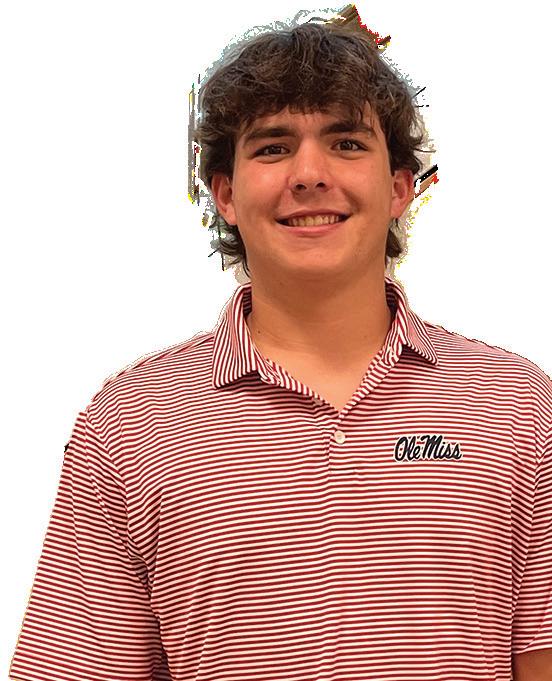


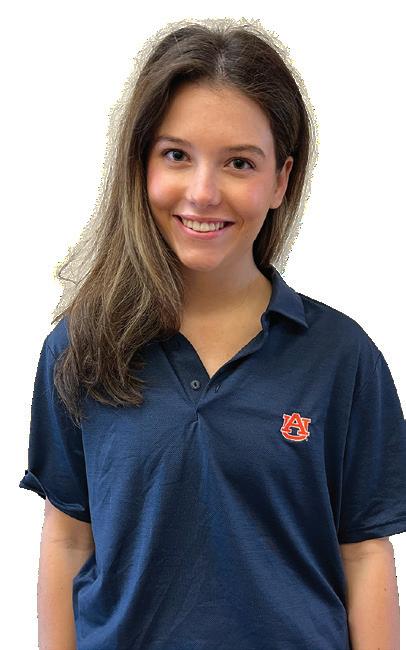


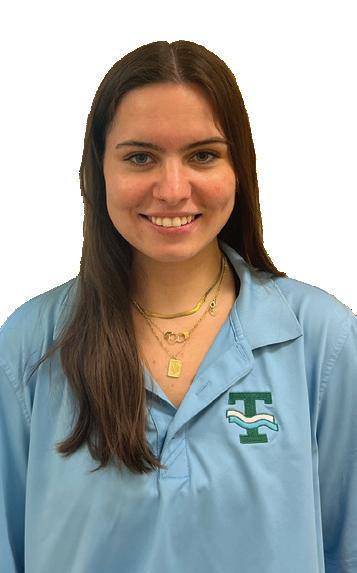

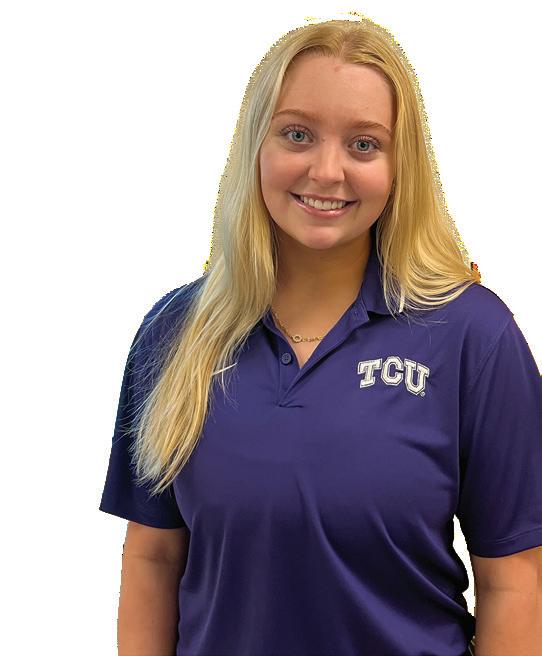








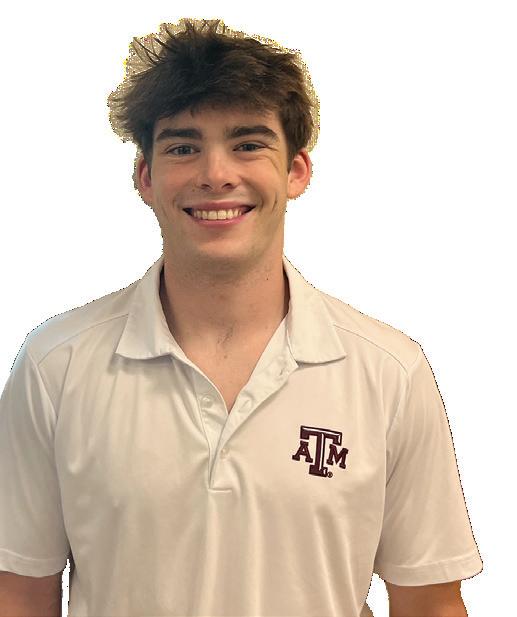


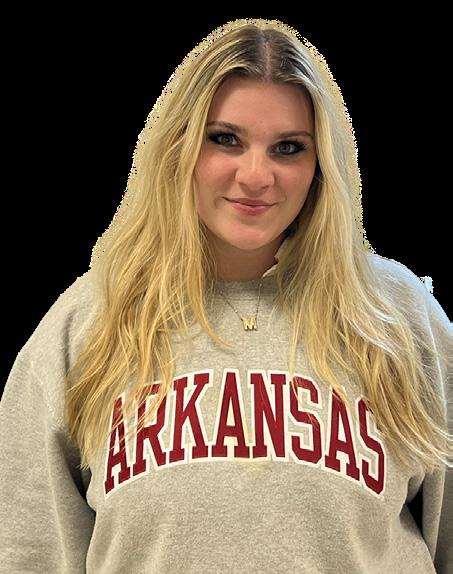

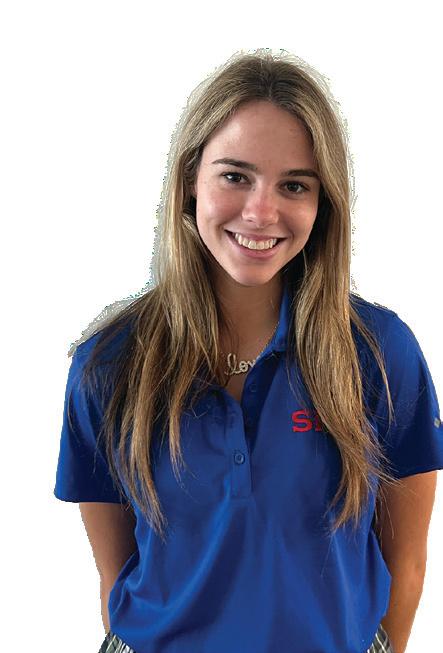
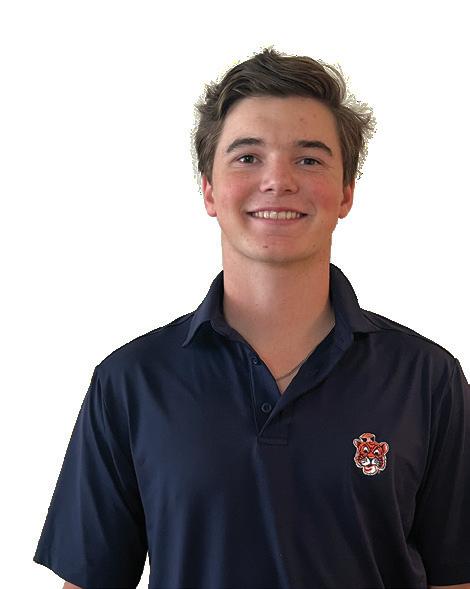











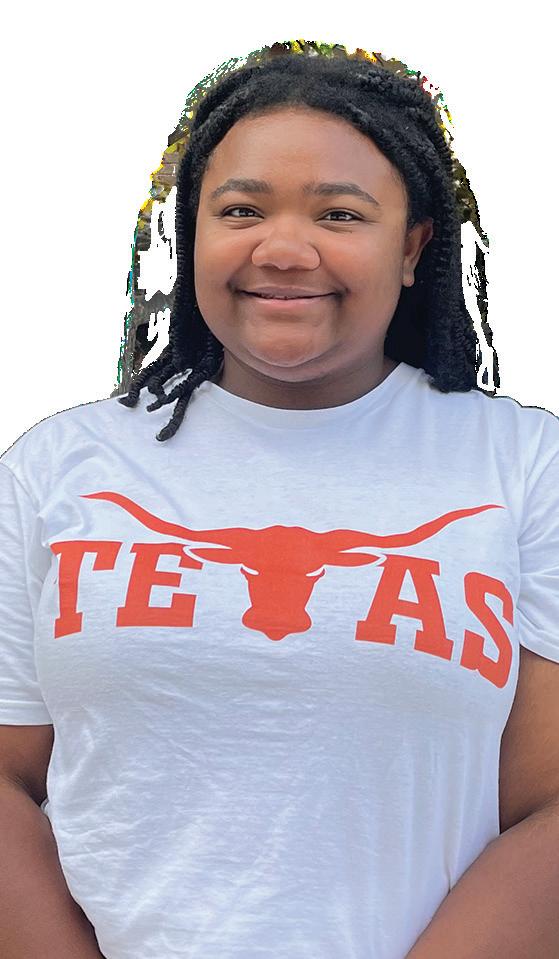









Recognizing the Class of





Harvey | University of Mississippi
Henderson | University of Texas at Austin
Hernandez | University of Kansas
Houser | University of Oklahoma Christopher Inglis | University of Pennsylvania
Inglis| University of Florida Houston Jones | Southern Methodist University James Jones | Vanderbilt University
Keay | University of Mississippi
Frazer Knodel | Indiana University
Camden Konradi | St. John's University
Logan Lear | University of North Carolina, Spain
William Lett | Texas A&M University
Cara Lichty | Washington University in St. Louis
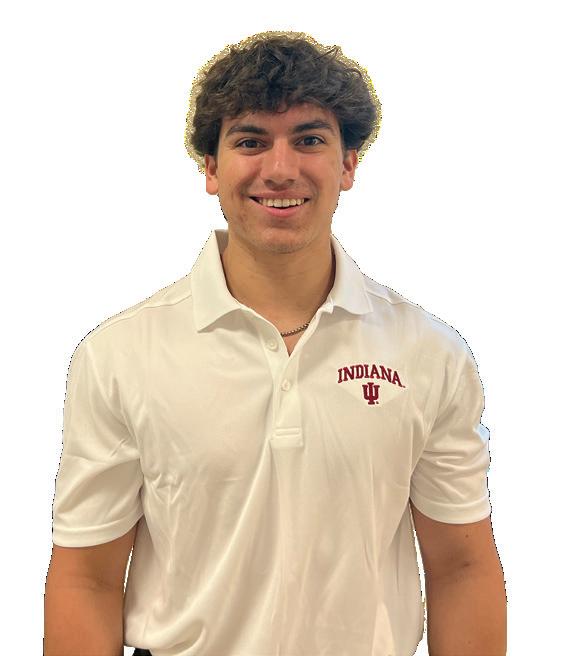
Sienna Link | Tulane University
Charles Liu | Pomona College
Ava Loftus | Texas A&M University
Elliot Lovitt | Stanford University
Baker Madans | Auburn University
Simran Malhotra | University of Southern California
Olivia Marquez | Texas Tech University

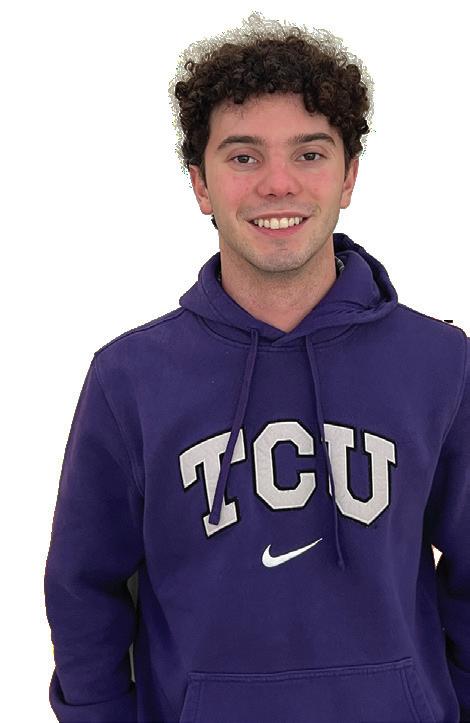

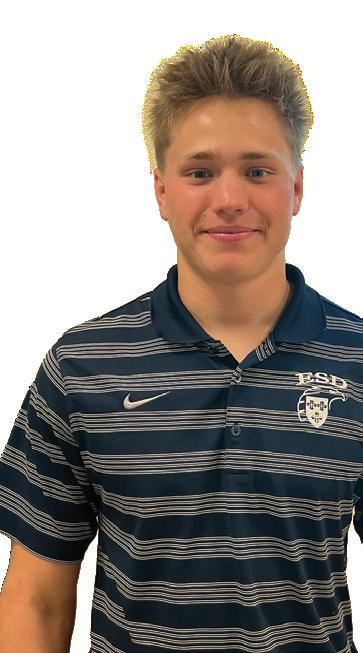
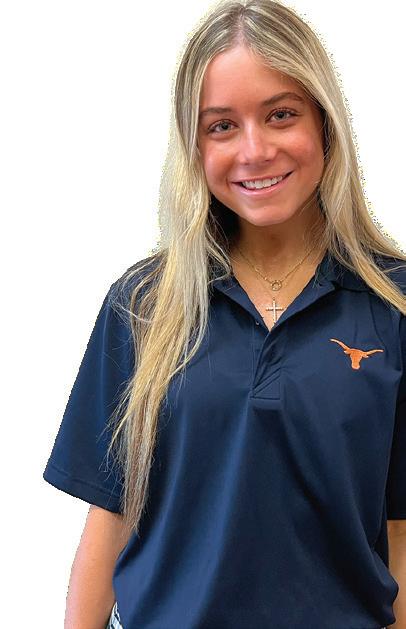

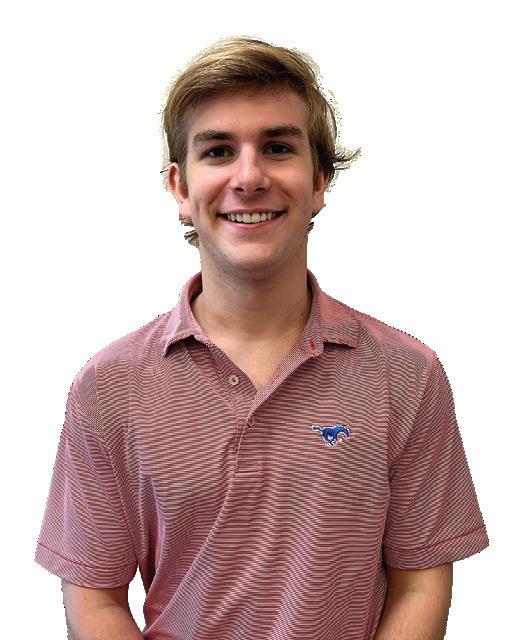

Charlie Massoud | Southern Methodist University
Daniel Matthys | Undecided
Ellison Mattocks | Texas Christian University
Madeline Mayer | Auburn University
Gabby McClintick | New York University
Xavier Monteiro | Westminster University
Gwyn Moore | University of Virginia
Xander Nelson | University of Oklahoma
Charlie Neuhoff | Blinn College
Collin Nicholson | Austin Community College District
Addison Page | Southern Methodist University
Hayden Parker | Indiana University Bloomington
Jackson Pennington | Southern Methodist University
Hunter Perez | University of Mississippi
Katherine Phillips | Auburn University
Abby Pickens | Washington and Lee
Caroline Prestidge | Southern Methodist University
Ford Prestidge | University of Texas at Austin
Dalyan Prieto-Akmansoy| Trinity College Dublin
Alex Ramirez | Cornell University
Sophia Raveling | Texas Christian University
Caden Robert | University of Mississippi
Tucker Robertson | Tuskegee University
Ben Rochon | University of Texas at Austin
Daly Ryder | University of Texas at Austin
Kate Ryder | College of William & Mary
Hunt Sands | High Point University
Amelia Schoellkopf | University of Texas at Austin
Brooks Searcy | University of Texas at Austin
Lauren Sharpe | Texas Christian University
Margaret Shirey | University of Arkansas
Harry Sochia | Syracuse University
Barrow Solomon | Stanford University
Cole Spence | Montana State University
Austin Stibbens | Hampden-Sydney University
Slaton Strey | Texas A&M University
Caroline Sutter | University of Alabama
Shivani Swaminathan | Wellesley College
Stephen Swann | Auburn University
Charlotte Tomlin | University of North Carolina at Chapel Hill
Taylor Turner | University of Mississippi
Jack Venable | Texas Christian University
Harry Vose | Southern Methodist University
Charlotte Wilson | Indiana University Bloomington
Virginia Wilson | University of Texas at Austin
Wheeler Wood | Tulane University
Easterly Yeaman | Washington and Lee University
Keira Zellmer | University of Mississippi